fulfillment center
description: a facility where orders placed by customers are picked, packed, and shipped to their final destination.
88 results

Arriving Today: From Factory to Front Door -- Why Everything Has Changed About How and What We Buy
by
Christopher Mims
Published 13 Sep 2021
Chapter 14: What Actually Happens Inside Amazon’s Warehouses 2 billion totes: Brian Heater, “Amazon Says It Has Deployed More than 200,000 Robotic Drives Globally,” TechCrunch, June 5, 2019, https://techcrunch.com/2019/06/05/amazon-says-it-has-deployed-more-than-200000-robotic-drives-globally. “300,000 associates”: “What Robots Do (and Don’t Do) at Amazon Fulfilment Centres,” About Amazon, https://www.aboutamazon.co.uk/amazon-fulfilment/what-robots-do-and-dont-do-at-amazon-fulfilment-centres. 200 semi-automated “fulfillment centers”: “Amazon Supply Chain and Fulfillment Center Network,” MWPVL International, https://mwpvl.com/html/amazon_com.html. 200,000 of these robots: Heater, “Amazon Says It Has Deployed More than 200,000.” bargain-hunting resellers: Rachel Siegel, “‘Flesh and Blood Robots for Amazon’: They Raid Clearance Aisles and Resell It All Online for a Profit,” Washington Post, February 8, 2019, https://www.washingtonpost.com/business/economy/flesh-and-blood-robots-for-amazon-they-raid-clearance-aisles-and-resell-it-all-online-for-a-profit/2019/02/08/f71bff72-2a60-11e9-984d-9b8fba003e81_story.html.
…
As ever, we’ll thread the eye of otherwise incomprehensible complexity by following the path of our humble USB charger. What follows is an account of how goods move through a sort of platonic ideal of a fulfillment center, informed by the accounts of workers at Amazon’s Shakopee, Minnesota, fulfillment center just outside Minneapolis, and also by research and reporting at other Amazon fulfillment centers of the latest generation, most notably the one in Baltimore, Maryland. The technology in each of these fulfillment centers is nearly identical, but the layout changes as the industrial engineers who design these facilities learn from each one they build and operate.
…
Like Darwin’s Galápagos finches, the more than 200 semi-automated “fulfillment centers” in the United States in which Amazon stores its inventory and distills it into individual orders are all identifiable as members of the same lineage. Yet each of these warehouses is also, on close inspection, different. Since Amazon’s operation and robotics teams are constantly learning and incorporating those lessons into newer facilities, it all depends on when each fulfillment center was built. The latest generation of semiautomated fulfillment centers includes two—or sometimes one—“pick towers.” Pick towers are two- and three-story structures in which hundreds of “drive units,” Amazon-orange robots resembling oversize Roombas, with eight-foot-tall shelves of goods riding on top of them, scurry about in a caged-in, human-free zone.

Drugs 2.0: The Web Revolution That's Changing How the World Gets High
by
Mike Power
Published 1 May 2013
Now you could complete your order, and pay for it (using AlertPay) within minutes, and you would get automated emails updating you with the status,’ he says. Matthew’s site set the technical standard for those that would follow. The web enabled Matthew’s business to operate remotely, and he took a hands-off role much of the time. ‘I built an offshore fulfilment center as soon as I could not handle the load by myself (which was quite quickly). We had the fulfilment center in Taiwan, labs in two or three other countries, I was in yet another country, and often traveling the globe for various reasons, yet everyone was interconnected and you could often complete your order and see it ship within two hours,’ he explained.
…
In 2011, I spotted a new site whose name bore a certain resemblance to that of the closed store, and guessed, correctly, that the old site’s owner had moved out of the retail business into the wholesale market. His name, for the purposes of this book, is Matthew. We exchanged several emails, long, thoughtful affairs rich with detail and insights into the business. Matthew says his business was, at its peak, shipping around a hundred orders worldwide daily, from his fulfilment centre in Taiwan. The compounds were sent in standard envelopes often decorated with Hello Kitty stickers and logos to make them look like birthday cards or love letters. Inside were research chemicals such as 2C-P, 2C-E, 2C-I (Shulgin’s psychedelic phenethylamines from PIHKAL), and 4-AcO-DMT (a drug identical in many ways to magic mushrooms, from TIHKAL), and dozens of others.
…
She knew the dosage of each of the chemicals she took, and approached them with an almost scholastic vigour; she was a curiously puritanical hedonist. She had read all of Shulgin’s work, and had methodically set about trying dozens of the compounds in the books. But when she found herself hallucinating on a stimulant, she knew something was wrong. The scene’s biggest supplier at that time, with fulfilment centres in Taiwan, had sent her a package containing 2C-P – a Shulgin psychedelic active at 8–12 mg. But the bag was mislabelled as buphedrone, a mephedrone variant with a standard dose of around 80–100 mg. Agnetha overdosed twice in a week. She described the experience in a post on Bluelight: The chemical took five hours to come up.
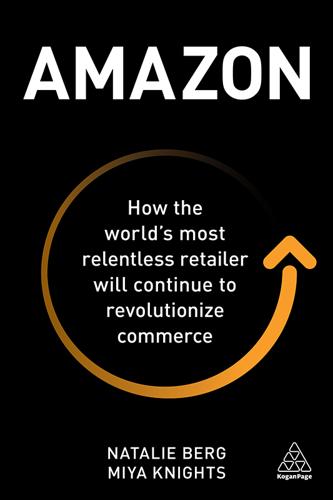
Amazon: How the World’s Most Relentless Retailer Will Continue to Revolutionize Commerce
by
Natalie Berg
and
Miya Knights
Published 28 Jan 2019
Nick Harkaway, novelist1 Having seen how Prime and Prime Now expand Amazon’s reach across categories and act as a conduit for the introduction of new services to strengthen its flywheel effect and fuel its rapid growth, it is important to think about how the cost of satisfying such impatient and varied demand impacts Amazon’s broader fulfilment logistics strategy. Consider for instance that Amazon’s first Prime Now fulfilment centre (FC) was in midtown Manhattan, opposite the Empire State building, and dedicated Prime Now teams work to fulfil orders via a variety of methods. ‘We are taking our operational expertise that we’ve developed at our more than 100 fulfilment centres around the globe and bringing it to New York to fuel this service’, declared Kelly Cheeseman, Amazon communications spokesperson, at its launch. ‘Delivery associates will walk, take public transportation, bike or drive to deliver to customers.’
…
From there, the carrier performs last-mile delivery to the customer. Sortation centres also ship packages to Amazon’s extensive Delivery Station Network, which represents the final node in the Amazon distribution network. Sortation centres can handle packages for a regional area on behalf of one or more fulfilment centres. Redistribution Fulfilment Centre (RFC) or the Inbound Cross Dock (IXD) Network: Amazon has in some regions opened B2B facilities to feed into a network of individual FCs. For example, the warehouse known as ‘ONT8’ in California – Amazon names its facilities using nearby airport codes and the numerical order in which they’re built – is an RFC for the other ONT and California FCs.
…
In his book, The Everything Store, published in 2013, Brad Stone explains the initial thinking: Bezos and his lieutenants sketched their own virtuous cycle, which they believed powered their business. It went something like this: lower prices led to more customer visits. More customers increased the volume of sales and attracted more commission-paying third-party sellers to the site. That allowed Amazon to get more out of fixed costs like the fulfilment centres and the servers needed to run the website. This greater efficiency then enabled it to lower prices further. Feed any part of this flywheel, they reasoned, and it should accelerate the loop.3 After two decades of investment, the flywheel is now spinning. Amazon continues to diversify its business, looking well beyond the borders of retail, to feed the flywheel.
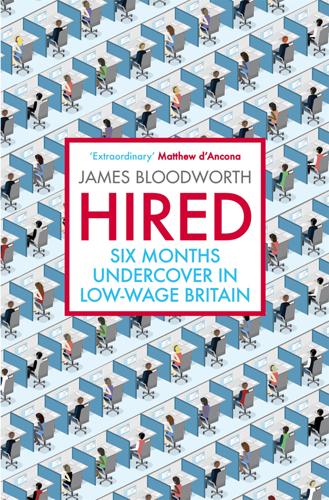
Hired: Six Months Undercover in Low-Wage Britain
by
James Bloodworth
Published 1 Mar 2018
We love coming to work and miss it when we’re not here! declared a life-sized cardboard cut-out of a woman named ‘Bez’. Similarly, almost everything that had a name was given a euphemism. Even calling the place a warehouse was a minor transgression. Instead, you were informed on the first day that the building would henceforth be known as a ‘Fulfilment Centre’ – or FC for short. You were not fired or sacked; instead you were ‘released’. Significantly, the potentially antagonistic categories of Boss and Worker had also been abolished. You were all ‘Associates’ – both high and lowly alike. Over the course of a single morning the average picker could earn around £29 carting totes back and forth along the dimly lit aisles of the warehouse.
…
Gradually these disappeared too. Following millions of pounds of investment old mining communities are being transformed, declared one headline in a local paper from 2011 when Amazon first came to the town.24 The transition in Rugeley is one that is replicated across Britain. Amazon has other fulfilment centres in Hemel Hempstead, Hertfordshire, Swansea, Doncaster and South Yorkshire – all former mining areas. Sports Direct’s biggest warehouse, which was compared to a ‘workhouse’ and a ‘gulag’ by the trade union Unite,25 is located in Shirebrook, Derbyshire, the site of the old Shirebrook Colliery, which closed in 1993.
…
NOTES Part I 1 Remarks overheard by author, 24 March 2016. 2 Remarks made by colleague, 23 March 2016. 3 Remarks made by colleague, 3 April 2016. 4 Remarks made by colleague, 24 March 2016. 5 https://archive.org/stream/principlesofscie00taylrich#page/40/mode/2up 6 http://www.bus.lsu.edu/bedeian/articles/MostInfluentialBooks-OD2001.pdf 7 Remarks made by supervisor, 24 March 2016. 8 http://www.hemeltoday.co.uk/news/worker-suspended-over-suckers-slur-1-5382838 9 Remarks made on first day, 15 March 2016. 10 Author interview with Chris, 16 April 2016. 11 http://amazon-operations.co.uk/the-complete-package/about-our-fulfilment-centres 12 https://www.ft.com/content/90fb85a8-ff5d-11e6-8d8e-a5e3738f9ae4 13 http://www.ft.com/cms/s/0/0d4434d6-fbe3-11e5-b3f6-11d5706b613b.html#axzz4AJgkDRug 14 http://www.thisismoney.co.uk/money/mortgageshome/article-3464221/Property-earns-two-five-workers-Average-house-price-rise-exceeds-38-salaries.html 15 http://www.insse.ro/cms/en/content/earnings-1991-monthly-series 16 http://www.ilivehere.co.uk/statistics-rugeley-staffordshire-33040.html 17 https://campaign.goingtowork.org.uk/petitions/amazon-co-uk-work-with-gmb-to-give-temp-workers-a-decent-job 18 Author interview with Claire, 22 April 2016. 19 https://www.theguardian.com/money/2017/jan/31/employment-tribunal-cases-down-70-since-fees-introduced 20 Remarks made by supervisor, 23 March 2016. 21 Remarks made by Transline rep, 8 April 2016. 22 Author witnessed incident on 25 March 2016. 23 Remarks overheard by author, 31 March 2016. 24 http://www.expressandstar.com/editors-picks/2015/03/04/in-pictures-pit-sites-after-the-mining-years/ 25 https://www.thesun.co.uk/news/1246497/sports-direct-founder-mike-ashley-accused-of-running-a-gulag-after-mp-grilling/ 26 Author interview with Alex, 7 April 2016. 27 Author interview with Alex, 7 April 2016. 28 Ruth Cherrington, Not Just Beer and Bingo!

Who Owns England?: How We Lost Our Green and Pleasant Land, and How to Take It Back
by
Guy Shrubsole
Published 1 May 2019
even by building flats Ashley Armstrong, ‘Tesco Towers: supermarket enters the fray with a radical new solution to the housing crisis’, Telegraph, 19 November 2016. currently have sixteen James Sillars, ‘Amazon to create 400 jobs at new UK fulfilment centre’, Sky News, 29 January 2018, https://news.sky.com/story/amazon-to-create-400-jobs-at-new-uk-fulfilment-centre-11227459 all but one Land Registry Corporate & Commercial dataset entries for ‘Amazon UK Services Ltd’ and ‘Amazon.co.uk Ltd’. at least forty Land Registry Corporate & Commercial dataset entries for ‘Moy Park Ltd’ turns up eighty land titles, of which forty appear to be distinct farmsteads with postcodes, and the remainder additional land parcels attached to them.
…
Internet shopping and pricier petrol have made giant hypermarkets built miles from where people live look less and less like smart investments. In 2016, Tesco’s beleaguered CEO announced the company was looking to make better use of the land it owned by selling it for housing, and even by building flats on top of its superstores. As for the supermarkets’ internet shopping rival Amazon, whose gigantic ‘fulfilment centres’ resemble the vast US government warehouse at the end of Raiders of the Lost Ark – well, Amazon currently have sixteen of those across the UK. And they’ve grown very quickly: all but one of their property leases have been bought in the past decade. As retailers have grown ever larger, so have the industrial farms supplying them with produce.

Upscale: What It Takes to Scale a Startup. By the People Who've Done It.
by
James Silver
Published 15 Nov 2018
Of course, the first wins are always the easiest and then it gets a bit harder later on.’ Headache #2: Logistics Logistics were another matter. Or ‘hugely difficult’, as Fletcher puts it. ‘This was probably the largest risk we took as a business because we started the full launch process, including securing and building fulfilment centres, while we hadn’t solved this problem.’ The specific issue his small team had to crack was that the United States Postal Service (USPS) did not have rich data on its own performance. Or, if they had, they couldn’t source it. For a producer of healthy snacks, dependent on slick and seamless distribution, this was of course a major problem.
…
‘It’s back to the “standardisation versus localisation/adaptation” question - do you really need an office or can you hold back for just a little bit?’ When Graze first launched in the US and was carrying out its groundwork, the team used a WeWork office in Manhattan, although it had already leased its own fulfilment centre in New Jersey, says Fletcher. ‘It kept coming back to how much complexity do you want? Do you get an office that’s this big or this big?’ he asks, demonstrating office size much like a fisherman would a prize catch. ‘We hadn’t quite worked out how big the team was going to be. We were still having strategic debates on questions like “Do we really need these local experts or don’t we?”

Becoming Data Literate: Building a great business, culture and leadership through data and analytics
by
David Reed
Published 31 Aug 2021
Louis DiCesari, global head of data, analytics and AI at Levi Strauss & Co, provides two examples from the response of that brand retailer: “While our stores were closed, we turned our European website into a lab, testing all of the promotion strategies we always wanted to try, but couldn’t because of cross-channel complexities. We learned what worked where and we generated better price elasticity data than we ever had before. “We didn’t just let our stores sit closed, we turned them into micro fulfilment centres, leveraging AI-enabled ship-from-store capabilities to fulfil online orders and move through inventory. Of online demand in May 2020, 30% was fulfilled by stores, contributing to e-commerce growth of 79% that month.” Using an unprecedented disruption to the market to explore data-driven opportunities such as multi-variate testing and AI is a prime example of how data practitioners should think.

Open for Business Harnessing the Power of Platform Ecosystems
by
Lauren Turner Claire
,
Laure Claire Reillier
and
Benoit Reillier
Published 14 Oct 2017
Finally, FBA, a service for marketplace sellers, provides the link between Amazon Marketplace and Prime. FBA leverages Amazon’s own infrastructure and gives Amazon greater control over the entire value chain, hence reducing the risk of bad buyer experiences. When a seller joins FBA, their goods can become Prime eligible. The Amazon fulfilment centre handles logistics, customer service, product returns and, of course, delivery in record time, alongside goods sold by Amazon. This represents a huge gain of efficiency when customers order items from both FBA sellers and Amazon. The flywheel of traffic is at play again: FBA leads to more sales for sellers,10 more FBA sellers lead to more value for Prime customers, who then spend more, to the benefit of both Marketplace sellers and Amazon. 62 Platform-powered ecosystems Amazon is getting the best of both worlds by combining the reach of platforms with the control of simple distribution models in order to be a ‘one-stop shop’.

Scary Smart: The Future of Artificial Intelligence and How You Can Save Our World
by
Mo Gawdat
Published 29 Sep 2021
The quarterly pressure to achieve the numbers makes these factors, and many others, acceptable, even standard, practice. But it doesn’t need to be that way. With enough intelligence, we can find better routes to reach consumers using electric vehicles for a quick, zero-carbon-footprint product mobility. With enough intelligence, we can anticipate demand accurately and hence build smaller fulfilment centres, thus reducing power consumption and improving product freshness. With enough intelligence, we can inform the consumer and understand their preferences better so that they can choose to order exactly what they need exactly when they need it and in doing so reduce waste, as well as leaving them with some savings as the waste reduction also gradually improves our planet.

New Dark Age: Technology and the End of the Future
by
James Bridle
Published 18 Jun 2018
One driver explained how she had been assaulted by three intoxicated customers late one night in Los Angeles, but had been forced to return to work because her car was leased from Uber itself, and she was contractually obliged to keep up payments. (Her assailants were never apprehended.) Amazon’s fulfillment centre in Dunfermline, Scotland, is situated in an industrial site miles outside of the town centre, on the side of the M90 motorway. In order to reach it, employees must take private buses costing up to £10 a day – more than an hour’s wages – to shifts that might start before dawn or after midnight.

Confessions of a Bookseller
by
Shaun Bythell
Published 8 Aug 2019
Realising she couldn’t be the only person who daydreamed about running their own bookshop, she persuaded my parents to buy a shop in the middle of Wigtown, which is run as an Airbnb which anyone can rent in order to experience running a bookshop for a week. It is booked solid for the next three years and attracts visitors from all over the world. * FBA (Fulfilled by Amazon) is a service Amazon provides where booksellers can store their stock in one of Amazon’s warehouses (euphemistically named ‘fulfilment centres’). When orders come in for the books, they will package and send them out to customers. Although it solves the problem of not having enough space for books in the shop – as with almost every service that Amazon provides to third-party sellers – it comes at a cost which always leaves you on the brink of wondering whether it is worthwhile.
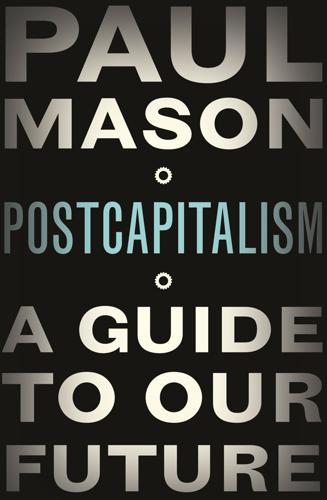
Postcapitalism: A Guide to Our Future
by
Paul Mason
Published 29 Jul 2015
In no other aspect of the market does the government coerce us to take part; nobody says ‘You must go ice skating or society will collapse.’ Work for a salary is the bedrock of the system. We accept it because, as our ancestors learned the hard way, if you don’t obey, you don’t eat. So our work is precious. If you ever doubt this, study what happens in the fulfilment centre of an e-commerce retailer, or a call centre, or in the work schedule of a home-care worker. You will see work timed and targeted as if the minutes were gold dust. Which, to the employer, they are. Of course at the high-skill, high-wage end of the labour market it is not time or discipline, but targets and quality control that are the instruments of coercion.

The Everything Store: Jeff Bezos and the Age of Amazon
by
Brad Stone
Published 14 Oct 2013
So in one of his first moves, Wilke renamed Amazon’s shipping facilities to more accurately represent what was happening there. They were no longer to be called warehouses (the original name) or distribution centers (Jimmy Wright’s name); forever after, they would be known as fulfillment centers, or FCs. Before Wilke joined Amazon, the general managers of the fulfillment centers often improvised their strategies, talking on the telephone each morning and gauging which facility was fully operational or had excess capacity, then passing off orders to one another based on those snap judgments. Wilke’s algorithms seamlessly matched demand to the correct FC, leveling out backlogs and obviating the need for the morning phone call.
…
Amazon operated an e-commerce distribution network of unrivaled scale but the company was still struggling to run it efficiently. Its seven fulfillment centers around the world were expensive, their output inconsistent. Bezos wanted the Amazon website to be able to tell customers precisely when their packages would be delivered. For example, a college student ordering a crucial book for a final exam should know that the book would be delivered the following Monday. But the fulfillment centers were not yet reliable enough to make that kind of specific prediction. Wilke asked Graves if he might meet with Wilke and his colleagues later that month to take a fresh look at their problems.
…
Patrick’s Day, some of Amazon’s biggest brains descended on a drab meeting room at the Fernley, Nevada, fulfillment center. Jeff Bezos and Brewster Kahle, a supercomputer engineer and founder of Alexa Internet, a data-mining company Amazon had acquired, made the two-hour flight from Seattle on Bezos’s newly purchased private plane, a Dassault Falcon 900 EX. Stephen Graves flew from Massachusetts to Reno and then drove the dreary thirty-four miles through the desert to Fernley. A few other Amazon engineers were there, as was the facility’s senior manager at the time, Bert Wegner. In the morning, the group toured the fulfillment center and listened to a presentation by one of the company’s primary contractors, who listed the benefits of additional equipment and software that he could sell them, reflecting the same traditional thinking about distribution that wasn’t working in the first place.
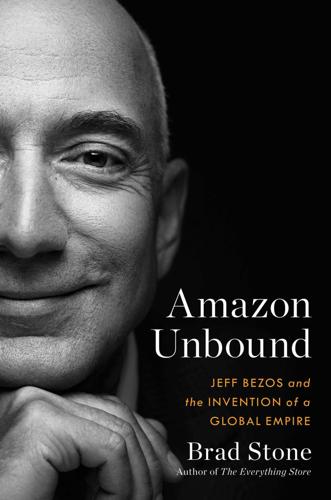
Amazon Unbound: Jeff Bezos and the Invention of a Global Empire
by
Brad Stone
Published 10 May 2021
A&P, 350–51, 378 Aarstol, Stephan, 170, 374–75 Abercrombie & Fitch, 179 Academy Awards, 137, 322 Accel, 122 Ackerman, Neil, 33, 168 Acxiom, 252 Adams, Jeff, 27–28 Adobe, 252 advertising, 14, 72, 76, 82, 178, 246–59, 287, 379, 384 Amazon search and sponsored products, 254–59, 263 Amazon’s entry into, 250 banner, 246, 252, 253, 259 customer data and, 252 Google search, 82, 83, 85–87, 254, 255 in India, 86 in Mexico, 83 New York–based team for, 250–51 Product Ads service, 253 Super Bowl, 48, 283 Washington Post and, 130 Adzinia, 250 Aerojet Rocketdyne, 272 Affleck, Casey, 135, 137, 149 Agarwal, Amit, 71, 73–79, 86–87, 89, 93, 383 Agostini, Adrian, 170, 178 Airbnb, 96, 248 Air Force, U.S., 279 Albertsons Companies, 186, 210 Albrecht family, 196–97 Aldi Nord, 196–97 Alexa Prize, 52 Alfalfa Club, 322–23 Alibaba, 71–72, 76, 104, 171, 173, 177, 179, 248, 260, 379 AliExpress, 171–73 Alipay, 72 Allen, James, 262 Allen, Paul, 288 Allen, Woody, 13, 149, 152, 153 Allen & Company, 15, 244, 345 AlliedSignal, 8 Alphabet, 67, 320, 360–61 Alpha House, 142 Amazon advertising and, see advertising algorithms of, 58, 164–65, 260 Amazon’s Choice products on, 257–60 annual net sales and profit of, 19, 159, 263, 285 antitrust issues and, 9, 10, 174, 307, 351, 353, 363–80, 381, 406 bookselling business of, 5, 9, 249, 378, 405 Campfire retreat of, 153–55 corporate culture at, 10, 18, 21, 95, 108–11, 113–15, 119, 398, 402 CRaP (can’t realize a profit) problem at, 189–90, 194, 204, 212 criticism of, 14, 214, 349–57, 364, 382, 391, 393, 398, 403 customer reviews on, 178, 201 customers refunded by, 197 as “Day 1” company, 6, 12, 406 “Day 2” stasis feared at, 248, 261, 262 early years of, 5–12, 15 employees at, see Amazon employees flywheel (virtuous cycle) of, 8, 72, 163, 226, 245, 257 founding of, 5–6, 322 Google ads and, 82, 83, 85–87 growth and expansion of, 6, 8, 11–13, 17, 18, 80, 163, 263, 287–90, 292, 316, 349 Heartbeat database of, 201 HQ2, see HQ2 lawyers of, 113, 147, 202, 258–59, 368–69 leadership committee at, see Amazon S-team leadership principles of, 10, 21, 36, 40, 61, 310, 406 leverage pursued by, 163–64, 183, 241, 242, 288, 405 “license to operate” of, 291 market capitalization of, 14, 19, 94, 109, 115, 159, 245, 263, 285, 288, 306, 384 OP1 meetings at, 10, 47, 50, 75, 76, 86, 102, 167, 168, 170–71, 244–49, 259–60, 262, 319 OP2 meetings at, 10, 102 physical stores of, see Amazon Books; Amazon Go PR and policy department of, 352–53, 369, 399 PR FAQs at, 31, 57, 194, 204 prices lowered by, 365 private-label products of, see Amazon private-label products profitability of, 94–96, 163, 166, 260 quality versus quantity of products on, 169–70, 175, 177 Quidsi acquired by, 9–10, 193, 209, 222 R&D expenses of, 67 retreat and slowdown of, 260 Ring acquired by, 319, 367 search results on, 201, 254–57, 259, 374 sponsored products on, 254–57, 259 S-team at, see Amazon S-team stock of, see Amazon stock taxes and, 117–18, 291, 301, 303, 335, 351, 354–57, 364 third-party sellers on, see Amazon Marketplace transportation networks of, see Amazon transportation networks and logistics two-pizza teams at, 10, 49, 51, 205, 239 2015 as critical year for, 94 Vine program of, 201 Washington Post and, 117–21, 126, 130, 134, 357, 363 whistleblowers fired from, 397–99 Whole Foods acquired by, 14, 15, 69, 186–87, 209–12, 213, 287, 353, 366 wind farm of, 245 Zappos acquired by, 9, 15, 193, 211, 220, 222, 353 Amazon Air, 14, 214, 232–36 Atlas Air crash, 240 Amazon Alexa, 13, 14, 16, 23, 26–38, 42–53, 54, 58, 65, 67, 70, 93, 95, 102, 116, 144, 148, 158, 187, 193, 195, 207, 211, 244, 258, 261, 287, 289, 401, 404 AMPED and, 43–44 beta testers of, 33, 37, 42–44 Bezos’s sketch for, 20, 25 bugs in, 51–52 as Doppler project, 26–38, 40, 42–47 Evi and, 34–36 Fire tablet and, 44 language-specific versions of, 50 launch of, 44–46 name of, 32 Skills Kit, 47, 52 social cue recognition in, 34–35 speech recognition in, 28, 33, 36, 37 voice of, 27–30 Voice Service, 47 see also Amazon Echo Amazon Books, 64, 69, 336 Amazon Care, 404 Amazon Customer Excellence System (ACES), 218 Amazon Dash Carts, 64, 69 Amazon Echo, 12–13, 23–38, 42–53, 109, 206, 287 beta testers of, 33, 37 Bezos’s sketch for, 20, 25 bugs in, 51–52 design of, 32–33 as Doppler project, 26–38, 40, 42–47 Dot, 47, 50 launch of, 44–46 as music player, 30–31, 33 remote control for, 44–45 Show, 53 Tap, 47, 48 wake word for, 31–32 see also Amazon Alexa Amazon employees, 2, 4, 10, 109–15 appeal process for, 114 badges worn by, 21 Bezos and, 110–15 Career Choice program for, 220 compensation plans of, 112, 262 executive, leaving for rival company, 231–32 at fulfillment centers, 2, 7, 213–14, 219–22, 224, 236, 238, 288, 320, 351, 405 at fulfillment centers, Covid-19 and, 385–401 at fulfillment centers, pay increase for, 355–56 healthcare for, 16 leverage and, 164 managers, span of control of, 261–63 New York Times exposé on work environment of, 95, 109–11, 113–14, 119, 352 number of, 14, 19, 159, 285, 287–89, 292, 384 organizational rearrangement and, 261–62 parental leave program for, 114 Pay to Quit program for, 220 performance review system for, 114–15 on private-label teams, 200–203, 209, 258, 353, 368 recruiting difficulties and, 292 retail, hiring freeze on, 260 in Seattle, cap on number of, 304 stack ranking of, 110–12, 114, 219 turnover rate of, 109–10, 112 unions and, see labor unions Amazon Employees for Climate Justice, 4, 397 Amazon Fire Phone, 2, 13, 15, 22, 33, 38–42, 45, 46, 58, 70, 95, 189, 382 Amazon Fire tablet, 40, 44, 75, 126, 129, 251 Amazon Fire TV, 33, 42, 44 Amazon Flex, 238 Amazon Fresh, 69, 188–91, 196, 197, 204, 207, 208, 211, 222, 230, 241–43, 391 Amazon fulfillment centers (FCs; warehouses), 6, 8, 9, 11, 80, 97, 104, 165, 183, 194, 197, 213–14, 216, 241, 354 accident prevention at, 238 Covid-19 and, 385–401 employees at, 2, 7, 213–14, 219–22, 224, 236, 238, 288, 320, 351, 405 employees’ pay increase at, 355–56 Fulfillment by Amazon for third-party sellers, 165–71, 173, 389 in Lehigh Valley, summer conditions at, 220–21 non-sortable, 217–18 robots in, 213, 222–24, 388, 389 Amazon fulfillment network, see Amazon transportation networks and logistics Amazon Go, 13, 54–69, 70, 95, 102, 144, 148, 150, 158, 211, 244, 287, 404 Amazon headquarters in Seattle Blackfoot building, 99 Block 18, 303–4 Day 1 building, 150, 292, 303 Denny Triangle, 139 Fiona building, 25, 27 Otter building, 62, 65 Rainier Square Tower, 304 South Lake Union, 11–12, 21, 48, 99, 139, 288–89 Spheres, 150–51, 288, 289, 327, 381 Amazon India, 13, 70–71, 73–82, 86–93, 94, 95, 144, 148, 158, 287, 383–84 Amazon Kindle, 9, 14, 22, 23, 25–26, 27, 40, 55, 93, 116, 187, 211, 232 Fire tablet, 40, 44, 75, 126, 129, 251 Amazon Lockers, 211 Amazon Marketplace, 8, 13–14, 163, 165, 168–83, 187, 246, 254, 367–68, 376–79 Amazon Exclusives and, 170 Amazon Lending and, 170, 171, 375 Brand Registry and, 181 Chinese sellers on, 171–81, 183, 248, 254, 260, 287 counterfeit goods on, 13, 72, 177, 179–83, 370, 379 Covid-19 and, 389 data from sellers on, and Amazon’s private-label products, 201–3, 209, 353–54, 366, 368–71, 380 eBay and, 169 Fashion Seller Conference, 179–80 Fulfillment by Amazon and, 165–71, 173, 389 Project Zero and, 183 Seller Central and, 169, 172 sellers’ complaints about, 351, 367–68, 370–77, 405 unsafe products on, 177–78, 181, 379 Amazon Mexico, 80–85, 95, 144 Amazon Pharmacy, 404 Amazon Polly, 29 Amazon Prime, 8, 87, 104, 107, 109, 126, 138–39, 147–48, 158, 163, 165, 193, 211, 226, 227, 241–43, 263, 379, 384 Amazon Prime Day, 95, 104–9, 389 Amazon Prime Now, 194–98, 204, 205, 208, 211, 212, 213–14, 238, 241 Amazon Prime Pantry, 194 Amazon Prime Video, 48, 93, 136, 138–41, 143, 147–49, 152, 158, 183, 287, 401 Amazon private-label products, 198–205, 209, 211, 258–59 Basics, 199, 201, 203, 258, 372, 375, 378 Bloom Street, 198–200 Elements, 199, 200 employees on teams for, 200–203, 209, 258, 368 Essentials, 202 third-party seller data and, 201–3, 209, 353–54, 366, 368–71, 380 Wickedly Prime, 200 Amazon Restaurants, 260 Amazon S-team, 47, 73, 75, 80, 97, 98, 104, 105, 108, 113, 115, 156, 164, 168, 173, 181, 192, 195, 207, 214, 219–21, 224, 243, 246, 248, 262, 293, 294, 318, 336, 350, 352, 370, 402 advertising and, 249–51, 255–56 air freight and, 234 Alexa and, 50 Amazon Fresh and, 189 Amazon Go and, 55, 60, 62 Amazon private labels and, 200, 203 China-based sellers and, 174, 175 Covid-19 and, 386–87, 390 Herrington’s memo and, 189–90 HQ2 and, 298, 300–302, 305, 306, 315 India and, 80, 86–87 Smalls and, 395 warehouse worker pay and, 355–56 Amazon stock, 6, 7, 13, 15, 58, 94, 95, 103, 109, 210, 245, 262, 263, 288, 306, 384 Bezos divorce settlement and, 346 in Bezos’s funding of Blue Origin, 278 Bezos’s wealth and, 11, 15, 95, 112–13, 349 dual-class structure for, 320–21 taxes and, 354 Amazon Studios, 13, 14, 135–37, 141–58, 244, 322, 325, 326, 401 Bezos’s storytelling guidelines for, 151–52 Amazon Tap, 47, 48 Amazon transportation networks and logistics, 14, 212, 213–43, 287, 401 Amazon Air in, 14, 214, 232–36 Amazon Air crash and, 240 Amazon Logistics division, 228–31, 236, 239–42, 388, 402 Christmas fiasco at Worldport, 225–27, 232 crashes and, 237–38 delivery service partners (DSPs) in, 228–29, 236–41 delivery stations in, 230 drivers in, 14, 189, 191, 195, 211, 212, 214, 228–30, 236–41 drone program and, 233 fatal accidents and, 236–37 FedEx in, 226–28, 232, 233, 235, 242, 358 freight transporters in, 229 last-mile network in, 228, 241–42 Mosaic program of truck trailers in, 229 Prime air hub in, 235–36 Rabbit app in, 238–39 safety problems in, 236–40 sortation centers in, 14, 213, 227–29, 236 Sunday deliveries in, 227–28 UPS in, 14, 216–17, 225–28, 232, 233, 242, 358 USPS in, 227, 228, 242, 335, 351, 357–58 see also Amazon fulfillment centers Amazon Treasure Truck, 204–6, 209 Amazon Web Services (AWS), 8–9, 13, 24, 29, 37, 70, 79, 95–103, 109, 115, 144, 182, 249, 259, 261, 263, 287, 312, 320, 351, 359–60, 362, 363, 377, 379, 384, 398, 405 Covid-19 and, 401 culture at, 99–101 JEDI contract pursued by, 351, 359–63, 381 re:Invent conference of, 362 revenues and profits of, 96, 103–4 Ambani, Mukesh, 93, 384 American Astronomical Society, 277 American Media Inc.
…
As Clark had hoped, they magnified worker productivity and decreased the rate of growth of Amazon’s seasonal labor needs relative to its sales. They also allowed Amazon to build denser fulfillment centers, with the shelf-toting robots swarming over the ground floor as well as a series of reinforced mezzanines. In a 2014 TV interview, Clark estimated that Amazon was able to get 50 percent more products per square foot into new fulfillment centers than the previous generation. The robots also transformed labor that was physically exhausting, characterized by endless walking, into work that was instead mentally straining, with employees standing in place and monotonously repeating the same movements over and over.
…
On April 8, Amazon tweeted a video of the CEO walking through a fulfillment center and Whole Foods near Dallas, wearing a mask and with his sleeves rolled up—the first time he had toured a warehouse in years, said several operations employees. Meanwhile, he skipped his Wednesday meetings at the Washington Post and Blue Origin. Executives there said they didn’t speak to him for weeks during the early stages of the pandemic. The increase in Bezos’s public prominence was partly the work of a CEO trying to demonstrate leadership at a challenging time. As the virus spread, anxiety followed. Absenteeism in the fulfillment centers soared; by some estimates, 30 percent of Amazon workers failed to show up as they got sick with Covid or heard about colleagues, friends, or family contracting the disease, fearing that they might be next.

On the Clock: What Low-Wage Work Did to Me and How It Drives America Insane
by
Emily Guendelsberger
Published 15 Jul 2019
The situation for Amazon’s blue-collar workers at present, then, is a real, honest look at that “future of work” everybody’s so interested in. But journalists can’t just wander into a fulfillment center to check out the working conditions. Most fulfillment centers are pretty remote, and security is tight—you can’t get through the entry turnstiles without an Amazon ID badge or an escort. It is, however, pretty easy to get a job in a fulfillment center. A few days from now, when I’m out in the mod on my own, I’ll encounter my very first “modesty-wrapped” dildo. For whatever reason, most sexually explicit products at SDF8 get “modesty-wrapped,” or shrink-wrapped in opaque black plastic so workers can’t see what’s inside.
…
Then there was a 2015 piece from the investigative wing of the Huffington Post titled “The Life and Death of an Amazon Warehouse Temp.”3 It looks at the circumstances around the death of twenty-nine-year-old Jeff Lockhart Jr., an Integrity temp who collapsed while picking at a fulfillment center in Virginia and later died of heart failure. And that was… pretty much it. Frustrated, I started delving into Amazonian forums online, reaching out to dozens of people. Nearly all of them truly hated working for Amazon. However, they said, those few pieces hadn’t quite captured why fulfillment centers were, as one man put it, such an “existential shithole.” They tended to see the mainstream media’s focus on unsafe work conditions and low wages as really off base, for one thing.
…
“The way they make you feel absolutely downtrodden is something that can’t be explained to people who haven’t worked there,” wrote one woman who worked at a Kentucky fulfillment center in 2012 and 2013 in her early twenties. “People say, ‘Well, I’ve worked for such-and-such warehouse, surely it’s not that different—’ No, it is different. It’s downright dehumanizing.” “The first time I worked there was so soul-sucking I found myself nearly crying in my car right before I was supposed to walk in,” said a man who’d worked as a packer in another Kentucky fulfillment center in his early twenties. “Worst job I’ve ever had, and I worked at a goddamn McDonald’s.” “I’ve never seen psychological abuse anywhere like I’ve seen at Amazon.”
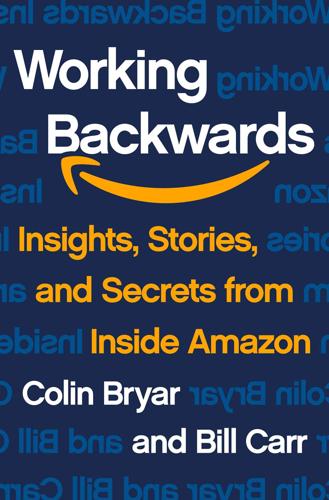
Working Backwards: Insights, Stories, and Secrets From Inside Amazon
by
Colin Bryar
and
Bill Carr
Published 9 Feb 2021
The backlog indicated the amount of work we’d need to do to make sure our customers received their gifts before the holidays. It would take a massive, concentrated effort. Many corporate employees were conscripted for work in the fulfillment centers and customer service. Colin worked the night shift from 7 p.m. to 5:30 a.m. in the Campbellsville, Kentucky, fulfillment center and telecommuted from the Best Western hotel to stay on top of his day job. Bill stayed in Seattle to keep the Video store running smoothly during the day and traveled south 2.5 miles each night to work in the Seattle fulfillment center. It was touch and go for a while. If we overpromised, we’d ruin a customer’s holiday. If we underpromised and stopped accepting orders, we were basically telling our customers to go elsewhere for their holiday needs.
…
For some items, the teams had to establish relationships with new manufacturers and would often buy inventory that had to be housed in the fulfillment centers. We soon saw that an increase in the number of detail pages, while seeming to improve selection, did not produce a rise in sales, the output metric. Analysis showed that the teams, while chasing an increase in the number of items, had sometimes purchased products that were not in high demand. This activity did cause a bump in a different output metric—the cost of holding inventory—and the low-demand items took up valuable space in fulfillment centers that should have been reserved for items that were in high demand.
…
These shipping charges are cringeworthy by today’s standards, but were actually quite competitive at the time. With Super Saver Shipping, the order would leave the fulfillment center within three to five days of being placed, and would be carried to its destination by a ground delivery service. This enabled Amazon to keep its costs low, since no flights were involved. It also made it possible for Amazon to group items together—ones that might have been ordered separately or were not all immediately available from a single fulfillment center—which reduced the total number of packages shipped. So Super Saver Shipping reduced our costs and lowered prices for the customer.

Fulfillment: Winning and Losing in One-Click America
by
Alec MacGillis
Published 16 Mar 2021
The meetings were often done within a half hour. And so it had gone for Amazon on July 27, 2015. The company promised to create 2,000 full-time jobs with a payroll of $60 million at the new warehouses. A JobsOhio employee told the board that Ohio was “competing with multiple Midwest states for both fulfillment centers.” If the state wanted Amazon to commit to the state it had avoided for years, it would need to offer a fifteen-year tax credit worth $17 million. This would be in addition to a $1.5 million cash grant from the state liquor-monopoly profits controlled by JobsOhio. The board approved the credit 4–0.
…
The agreement called for a ten-year state tax credit worth about $3.8 million to Amazon, in addition to a 100 percent exemption from local property taxes for fifteen years. Monroe was not alone in its magnanimity—in 2017 alone, Amazon would collect well over $100 million in subsidies to open fulfillment centers around the country, for a total of more than $1 billion over the previous decade. The company had a whole department tasked with securing subsidies—it called this its office of “economic development.” * * * As 2017 neared its end and the darkness ebbed slightly in Dayton, Todd Swallows started bouncing back, too.
…
The day after that, the OSHA Harrisburg office contacted the Cumberland County Coroner and learned that the autopsy revealed that the cause of death was in fact “multiple traumatic injuries due to a pallet truck accident,” including “intestinal bleeding,” “lacerated liver,” and “bruised heart.” OSHA’s Harrisburg office launched an investigation that same day. One of the agency’s reports on the matter began by describing in general terms the nature of the business where the death had occurred. “The company operates warehouses and fulfillment centers nationwide and sells and distributes retail merchandise throughout the country and overseas,” the report stated. “The corporate offices are in Seattle, Washington. The establishment is engaged in interstate commerce.” 4. Dignity The transformation of work BALTIMORE William Kenneth Bodani, Jr., needed to use the bathroom.

Wasteland: The Dirty Truth About What We Throw Away, Where It Goes, and Why It Matters
by
Oliver Franklin-Wallis
Published 21 Jun 2023
(‘The recyclers are desperate for manufacturer contracts, so they’ll do anything and keep their mouth shut,’ Wiens said.) In 2021, for example, an investigation by ITV News in the UK found that Amazon was sending millions of new and returned items per year to be destroyed.14 Just one of the company’s twenty-four fulfilment centres was destroying up to 200,000 items a week, ranging from TVs to books to Apple Airpods. (Amazon says it has since stopped the practice.) In 2020, Apple sued a Canadian recycler for reselling some of the 500,000 devices it had sent for shredding.15 The recycler, GEEP, blamed rogue employees – but the implication that the devices had been in good enough working order to sell rightly set off a wider scandal.
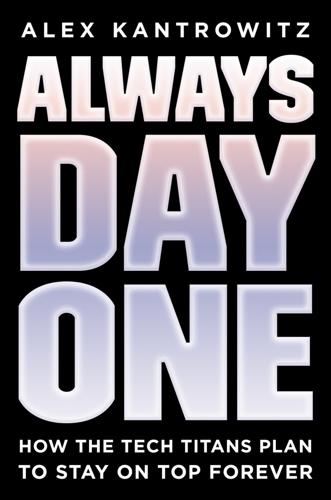
Always Day One: How the Tech Titans Plan to Stay on Top Forever
by
Alex Kantrowitz
Published 6 Apr 2020
Things get especially intense ahead of its Thanksgiving and Christmas peak season. The company’s corporate staff even used to take shifts inside fulfillment centers to help meet the demand. Robots should theoretically take some of the slack off Amazon’s workers. But they also make you wonder if being an out-of-work associate is preferable to being an overworked associate. Inside the Kent FC, a picker named Melissa, tattooed, in her twenties, and also a part-time Starbucks employee, told me she anticipates Amazon will one day automate more work in its fulfillment centers. “There’s going to be a way here where you won’t need somebody filling your totes all the time,” she said, using Amazon’s term for bins.
…
With twenty-five years of historical data at its disposal, Amazon knows what we want, when we want it, and it’s likely already sent the next thing you’re going to order to a fulfillment center near you, ready to ship when you hit Buy. Amazon knows a surge in winter coat orders is coming in the fall. But not only that, it knows certain ZIP codes buy lots of North Face jackets, so it can load up on North Faces in the nearby FCs. Using this knowledge, Amazon is automating a wide array of work in its corporate offices under an initiative it calls Hands off the Wheel. Amazon’s fulfillment centers get stocked with products before people buy them, a necessity for a company offering two-day shipping to more than 150 million paying Prime subscribers (with one-day shipping now rolling out).
…
Jeff Bezos’s Robot Employees A few thousand miles east of Amazon’s downtown Seattle headquarters, a large beige-and-gray warehouse sits not far off the highway. The building is the kind of size you measure in football fields. For the record, it can hold about fifteen, more than an entire Sunday’s worth of NFL games. Named EWR9 after the nearby Newark Airport, the warehouse is one of more than 175 fulfillment centers, or FCs, that Amazon uses to store, pack, and ship millions of products to customers every day. EWR9 itself can ship hundreds of thousands of packages in one twenty-hour operating period. When I visited EWR9 on a hot summer day in August 2018, the FC hummed with the sounds of robots working alongside human “associates.”

Ghost Road: Beyond the Driverless Car
by
Anthony M. Townsend
Published 15 Jun 2020
It’s as jaw-dropping a metaphor for an undesirable, yet possibly unavoidable, urban future as you’re likely to find. Thankfully, Amazon shelved its human-cage plans. Instead, many of the company’s fulfillment-center workers now don a less repressive protective device to ward off warehouse droids, called the Robotic Tech Vest. By signaling a human presence to nearby machines, this ghost road armor allows more than 125,000 fulfillment-center workers to commingle with some 100,000 warehouse droids, who quickly map out human habitats. “In the past, associates would mark out the grid of cells where they would be working in order to enable the robotic traffic planner to smartly route around that region,” explains an Amazon robotics executive.
…
Live Science, April 19, 2010, https://www.livescience.com/11011-marathons-26-2-miles-long.html. 123a thankless, never-ending battle against backhoes: Andrew Blum, Tubes: A Journey to the Center of the Internet (New York: Ecco, 2012), 1–10. 123800,000 square feet of order-fulfillment space: Allen et al., An Analysis of the Same-Day Delivery, 76. 123“Large shipments of goods atomize into hundreds”: Ted Choe et al., “The Future of Freight: How New Technology and New Thinking Can Transform How Goods Are Moved,” Insights, Deloitte, June 28, 2017, https://www2.deloitte.com/insights/us/en/focus/future-of-mobility/future-of-freight-simplifying-last-mile-logistics.html. 123Amazon’s newest fulfillment centers: Janelle Jones and Ben Zipperer, “Unfulfilled Promises: Amazon Fulfillment Centers Do Not Generate Broad-Based Employment Growth,” Economic Policy Institute, February 1, 2018, https://www.epi.org/publication/unfulfilled-promises-amazon-warehouses-do-not-generate-broad-based-employment-growth/. 123In big cities now you can find them in a circle: Patrick Kiger, “Driving Hard to Secure Last-Mile Logistics,” Urban Land Institute, February 5, 2018, https://urbanland.uli.org/industry-sectors/industrial/driving%E2%80%85hard-secure-last-mile-logistics/. 124a veteran local driver: Allen et al., An Analysis of the Same-Day Delivery, 141. 124deskilling of local delivery has driven down wages: Anoosh Chakelian, “ ‘Slaveroo’: How Riders Are Standing Up to Uber, Deliveroo and the Gig Economy,” New Statesman America, September 24, 2018, https://www.newstatesman.com/politics/uk/2018/09/slaveroo-how-riders-are-standing-uber-deliveroo-and-gig-economy. 125slash the cost of delivery by 90 to 95 percent: “Starship Technologies Inc.,” Robotics Business Review, accessed February 26, 2019, https://www.roboticsbusinessreview.com/listing/starship-technologies/. 125deskside delivery allowed workers to skip: “Starship Technologies Launches Commercial Rollout of Autonomous Delivery,” Starship, April 30, 2018, https://www.starship.xyz/press_releases/2708/. 125replacing a swarm of dirty, noisy, and often dangerous delivery trucks: “The Future of Moving Things,” IDEO, accessed June 11, 2018, https://automobility.ideo.com/moving-things/a-new-familiar-sight. 125raised $940 million in venture funding: Mary Ann Azevedo, “Nuro Raises $940M from SoftBank Vision Fund for Robot Delivery,” Crunchbase, February 11, 2019, https://news.crunchbase.com/news/nuro-raises-940m-from-softbank-vision-fund-for-robot-delivery/. 125Toyota’s mule, the e-Palette: Andrew J.
…
(a) Light-capacity conveyor with insulated compartment for on-call delivery up to 2 km. (b) Medium-capacity conveyor with refrigerated compartment for delivery of perishables up to 5 km. (c) Light-duty mule for street-corner parcel pickup, returns, and automated vending. (d) Heavy-duty mule for drayage between fulfillment centers and curbside unloading zones. (e) Driverless shuttle for last mile, up to six passengers seated and two standing. (f) Taxibot based on current production minivan, seats up to six passengers. (g) Purpose-built wheelchair-accessible taxibot, seats four passengers and attendant. DASH MARSHALL.
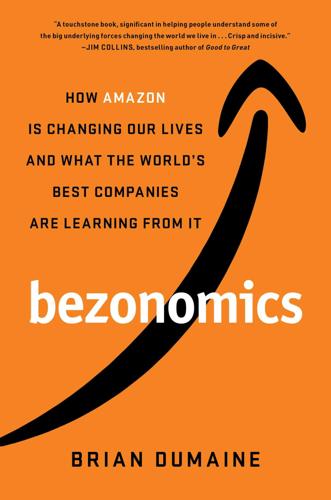
Bezonomics: How Amazon Is Changing Our Lives and What the World's Best Companies Are Learning From It
by
Brian Dumaine
Published 11 May 2020
One key to fast delivery is to build warehouses near where Amazon’s customers are, whether that’s Hertfordshire, England; São Paulo, Brazil; Osaka, Japan; New Delhi, India; or Tianjin, China. As of 2019, Amazon operated 175 warehouses around the globe and it keeps expanding, even buying up abandoned malls and turning them into fulfillment centers. In early 2019, it bought two malls in the Cleveland area that were near the city center, already had electric, water, and parking, and were adjacent to a bus stop for warehouse workers who couldn’t afford cars. The scale of Amazon’s distribution network is hard to grasp. From its massive complex of warehouses, Amazon shipped an estimated 3.3 billion packages in 2017, the equivalent to sending a parcel to nearly half the world’s population.
…
His model leads to a scenario in which “wages decline to zero.” His thinking is not yet mainstream, but it is chilling just to contemplate. To better understand how Amazon’s automation threatens the future of work, I visited one of its vast warehouses in Kent, Washington. Anyone who has ever spent time at one of Amazon’s fulfillment centers—as the company calls them—will find that the work there is anything but fulfilling. The Kent facility on the outskirts of Seattle employs two thousand people and sprawls over 815,000 square feet. But that number is deceiving because the warehouse operates on four stories, meaning that it really covers 2 million square feet, an area that would spread out over 46 acres.
…
From these parapets one can watch swarms of Amazon warehouse workers, dressed in T-shirts, shorts, and running shoes, stowing and picking products from bins or packing them into boxes. The conveyor belts emit a loud constant roar like a jet engine, broken by the occasional warning beep of a forklift or the whoosh of a robotic arm. Amazon’s 175 global fulfillment centers are some of the most automated in the world. After the company bought Kiva robots for $775 million in 2012, it started filling its warehouses with robots, and now some 200,000 of these machines whir around Amazon’s facilities doing many jobs that used to be done by humans. In one sense, this is a good thing.

The Lost Bank: The Story of Washington Mutual-The Biggest Bank Failure in American History
by
Kirsten Grind
Published 11 Jun 2012
ad campaign, 39 mergers and acquisitions, WaMu corporate cultures and, 52 interest in subprime lenders and, 59 process for absorbing, 50–51 See also specific merger or acquisition Meridian Capital Group, 255 Merrill Lynch & Co., 153, 270 Microsoft, 91, 164 Miller, Tom, 83, 84 minorities, 59, 60, 64, 142–44 See also Community Fulfillment Centers, WaMu money laundering, 192 See also Bank Secrecy Act Montebello, California: Community Fulfillment Center in, 144–45, 144n, 166 Monthly Treasury Average (MTA), 115n Montoya, Regina, 164 Moody’s Investors Service, 61–62, 237, 261, 264–66, 264n, 267–68, 286, 290–91, 292 Morgan Stanley, 3, 269, 287, 288 mortgage-backed securities defaults and, 173 early problems with, 152 Goldman Sachs relationship with WaMu and, 121 increase in subprime, 57, 70 investment banks bundling of, 120 layoffs of people working with, 188 Long Beach Mortgage repurchase of, 137 off-loading of, 154, 157, 158, 173 Pepper’s concerns about, 17 popularity of, 75 ratings of, 120, 158, 173 representations and warranties of, 74 reputation of Long Beach Mortgage, 157 risk and, 74, 75, 120 secondary market demand for, 63, 70, 75 WaMu as bundling own, 120 WaMu pressures to sell, 153–54 WAMU Series 2007-HE4, 156 WaMu volume of, 120 writedowns of, 187 See also Long Beach Mortgage; secondary market mortgage brokers/lenders collapse of subprime market and, 168 failures of, 187 First Magnus bankruptcy and kickbacks to, 168 increase in number of, 70–71 Jenne’s Option ARMs focus groups and, 116–17 Killinger’s comment about “irrational,” 163, 170, 240 Perrin’s fish analogy and, 130 Reich views about regulation of, 223 as short-term lenders, 119–20 underwriting guidelines and, 137 WaMu acquisition of, 84–85, 93, 97 WaMu funding for, 129 See also specific broker or lender mortgage servicing rights (MSRs), 101, 158 mortgages as collateral for raising liquidity, 210 as collateral on WaMu credit lines, 271, 286, 300 decrease in volume of WaMu, 158 JPM profits on WaMu acquisition and, 328–29 tracking of complex data about, 165–66 as “underwater,” 153 See also type of mortgage Moving Forward (WaMu internal newsletter), 201 Mozilo, Angelo, 127, 165n, 186n, 332–33 Mueller, Brian, 212–13, 263, 268–69, 276–77, 278, 292, 320, 323–24 Murphey Favre, 18–19, 29, 37, 38 Murray, Patty, 275 Mutual Travel, 27 naked short selling, 247–48, 330 Naroff Economic Advisors, 152 National Association of Realtors, 136, 151, 152, 152n National Australia Bank Limited, 97 negatively amortizing mortgage, 112, 113–14, 138 NetJets, 89, 97, 301, 303 New Century Financial, 71, 152, 166, 176, 329 New York State WaMu acquisitions in, 85 See also Cuomo, Andrew New York Stock Exchange, 54, 308, 322 The New York Sun, 269 The New York Times, 88, 125, 126, 129, 187, 189, 279, 298, 300–301, 318 The New Yorker: Bair interview in, 218 Newshour (PBS), 136 NINA loans (No Income, No Assets), 69 Norwest Bank, 27, 41, 42 Nova-Star, 72 Oak Hill Capital Partners, 235 Obama, Barack, 264 Occasio branches, 85–86, 106, 325 Office of the Comptroller of the Currency, 219, 222, 232, 233, 246, 317 Office of Thrift Supervision (OTS) closing of small banks and, 319–20 Countrywide Financial and, 222, 222n, 227 criticisms of, 319–20 defense of oversight responsibilities by, 317–18 demise of, 317–18 expansion of, 221–22 FDIC relationship with, 220, 224–28, 233, 242, 244–45, 248–52, 260, 262, 266–67, 270, 274, 275, 281–82, 287 formation of, 220, 221 IndyMac Bank and, 207, 208, 243–44, 274 Levin’s committee and, 318 mission of, 220 power of, 244 reputation of, 274 Schumer’s IndyMac letter to media and, 208 Superior Bank case and, 225 Treasury Department oversight of, 233 See also Office of Thrift Supervision (OTS), WaMu and; Reich, John Office of Thrift Supervision (OTS), WaMu and bank run and, 281–82 Bank Secrecy Act and, 192, 224 blame for WaMu failure and, 317 capital raise and, 228, 229, 234, 237, 258, 270, 294 closure of WaMu and, 299–300, 315–17 deadline for WaMu of, 274 enforcement order and, 258–59, 267, 270 Fishman/WaMu meeting at, 273–74 JPM acquisition of WaMu and, 304–5 JPM-WaMu direct negotiations and, 233–35, 236 Killinger-FDIC meeting with, 244–45 Killinger’s defense of WaMu and, 239 liquidity of WaMu and, 286, 299, 300n Long Beach Mortgage oversight by, 65, 66 OTS early concerns about WaMu and, 122, 224, 228, 229 political importance of WaMu to, 227, 244 pressures to replace Killinger from, 255 ratings for WaMu and, 176, 228, 248–50, 262, 263, 267, 274, 281–82 relationship between, 4–5, 6, 222, 244, 249, 263 Rotella and, 180 S report on WaMu by, 293, 299, 300 sale of WaMu concerns of OTS and, 250–52, 251n, 282, 293 seizure of WaMu and, 303–4 WaMu board’s lack of information and, 192 WaMu daily reports to, 299, 300 WaMu ignoring of, 223–24 WaMu reviews by, 223–24, 225–27 Old Stone Bank, 38 Olympus Bank, 39 online data room, WaMu, 271–72, 284, 291, 322 Oppenheimer, Deanna, 20, 54, 85–86, 94, 101, 106, 107 Option ARMs bank-borrower relationship and, 118 benefits of, 117, 118 borrowers’ lack of understanding about, 113–18, 138–39, 171 compensation and, 117, 128, 129, 160, 197 Countrywide-WaMu competition and, 127, 160 decline of housing prices and, 153 decrease in lending for, 158 defaults and delinquencies on, 157, 161, 186 documentation for, 126 in Downey, 154 FDIC alert about WaMu and, 262 at Golden West Financial, 120n as high-margin product, 150 increase in sales of, 118–20 at IndyMac, 207 interest rates and, 111, 112n, 114–15, 116–17, 156 investment properties and, 114 Jenne’s assignment concerning, 112–18 Jenne’s study of delinquencies and, 171, 172 JPM-WaMu negotiations and, 236, 246 Killinger’s congressional testimony about, 331 Killinger’s views about, 122, 241, 331 marketing of, 116 minimum amounts payments on, 138 off-loading of, 154, 157, 158, 159 OTS-FDIC views about, 266 OTS review of WaMu and, 224 Perrin and, 132 plans to save WaMu and, 228 President’s Club awards and, 142–43 pushing of sales of, 196 refinancing of mortgages and, 114, 116, 266 Reich and, 222–23 risk of, 138, 139 Rotella and, 143, 197n secondary market and, 112, 120 shareholder criticisms and, 194, 196 as underwater loans, 197 underwriting guidelines concerning, 126, 222–23 Vasquez loan as, 156 WaMu assets and, 232 WaMu commitment to sale of, 158–59 WaMu culture/values and, 132 WaMu profits from, 170 Option One Mortgage (H&R Block unit), 153 Optis software program, 100–101 “originate-to-sell” concept, 112 Orman, Suze, 243, 278 Osorio, Ada and Luis, 5–7, 313 Pacific First Bank, 39, 183 Paulson, Henry “Hank” Bair and, 219 Bair-Reich relationship and, 251 Cantwell conversation with, 293 closure of WaMu comments of, 315 congressional testimony of, 293 Dimon’s discussions with, 231 Fannie Mae and Freddie Mac takeover announced by, 254 financial market concerns of, 216 Fishman’s comments about saving WaMu and, 318 JPM acquisition of WaMu and, 301 Killinger and, 247–48 Lehman Brothers bailout and, 269 TARP and, 284–85, 288, 291, 293, 301, 314, 315, 328 Penn Square Bank, 26 pension funds, 73, 173, 194 Pepper, Lou anniversary celebrations for, 54–55 assets/size of WaMu and, 54 birthday parties for, 23–24 as board/trustee member, 9–10, 30 book by, 148–49 commercial real estate loans and, 26–27 Dimon’s Seattle address and, 328 dislike of WaMu name by, 203n failure of WaMu and, 309–10 as general counsel for WaMu, 10, 12, 22 hedging views of, 101 housing market decline concerns of, 133–35 Killinger CD gift from, 30–31 Killinger views of, 87, 102–4 Killinger’s advice from, 102–4, 133–35, 133n Killinger’s relationship with, 149, 309 leadership style of, 17–18, 20–21, 27–28 management philosophy of, 22–23 media and, 309–10 Murphey Favre merger and, 18–19 NYSE bell ringing and, 54 personal and professional background of, 9, 12–14, 21–22 personality and character of, 12, 15, 17–18, 27–28, 29, 205 reputation of, 10 retirement of, 30 Rotella’s relationship with, 149 as “savior” of WaMu, 14, 22 Seattle office of, 148 selling of WaMu headquarters by, 32 speeches to WaMu employees by, 9, 11, 12, 54–55 staff hiring by, 17–20, 55, 95, 103, 163 successors to, 25–31, 205 as temporary CEO of WaMu, 9–16 “too big to fail” idea and, 309–10 WaMu Alumni Fund and, 310–11 WaMu culture/values and, 20–21, 23–24, 147–48, 163 at WaMu reunion, 309 WaMu visits of, 148 in The WaMu Way video, 147–48 Pepper, Mollie, 9, 11, 30, 133, 309, 310 Pepper, Ruth, 13–14 Permanent Subcommittee on Investigations, U.S.
…
Meola’s next award recipient was Tom Ramirez, a WaMu loan consultant who had become a mortgage lender legend in Southern California. Ramirez worked out of WaMu’s office in Downey, a largely Hispanic neighborhood of cracked sidewalks and graffiti-marked homes, east of downtown Los Angeles. WaMu called the Downey office a Community Fulfillment Center, the bank’s name for home loan branches that served minority communities. Those centers often used even looser guidelines for making loans, allowing lower credit scores and less income documentation. Ramirez specialized in Option ARM lending. While he didn’t take out billboards with his face painted on the front, as many mortgage salespeople did, he was an expert marketer.
…
“In our world of superstars, he is bigger than a Brad Pitt, George Clooney, or Tom Cruise. He’s at the Henry Fonda, Burt Lancaster, John Wayne legendary status,” Meola said in announcing Ramirez’s award. Several months earlier a disturbing internal report had come out about the quality of the loans made in the Downey branch, as well as that of another Community Fulfillment Center in the neighboring East Los Angeles city of Montebello.76 For three years, rumors had circulated at WaMu about fraud in the two locations. But fraud is hard to prove, and it’s even harder to prove in a company atmosphere where sales trump all else. Schneider later presented a faux diagram of WaMu’s corporate structure, labeling each tier: “SALES.”

Prediction Machines: The Simple Economics of Artificial Intelligence
by
Ajay Agrawal
,
Joshua Gans
and
Avi Goldfarb
Published 16 Apr 2018
Over the past two decades, much of the rest of the fulfillment process has been automated. For example, research determined that fulfillment center workers were spending more than half their time walking around the warehouse to find items and put them in their tote. As a result, several companies developed an automated process for bringing the shelves to the workers to reduce the time spent walking. Amazon acquired the leading company in this market, Kiva, in 2012 for $775 million and eventually stopped servicing other Kiva customers. Other providers subsequently emerged to fill the demand for the growing market of in-house fulfillment centers and third-party logistics firms. Despite significant automation, fulfillment centers still employ many humans.
…
The prediction machine enables the robot to move around without a preplanned trail or track. Our new Mailmobile can operate in more environments without much additional cost. Delivery robots abound. Warehouses have autonomous delivery systems that can predict their environment and adjust accordingly. Fleets of Kiva robots transport products inside Amazon’s vast fulfilment centers. Startups are experimenting with delivery robots that take packages (or pizza) onto sidewalks and streets from businesses to homes and back again. Robots can now do this because they can now use data from sophisticated sensors to predict their environment and then receive instructions for how to handle it.
…
Despite significant automation, fulfillment centers still employ many humans. Basically, while robots can take an object and move it to a human, someone still needs to do the “picking”—that is, figure out what goes where and then lift the object and move it. The last bit is most challenging because of just how difficult grasping actually is. As long as humans play this role, warehouses cannot take full advantage of automation’s potential because they need to remain human friendly, at room temperature, with space for walking, a break room, restrooms, surveillance to protect against theft, and so on.

Rule of the Robots: How Artificial Intelligence Will Transform Everything
by
Martin Ford
Published 13 Sep 2021
All this allows physical retailers to begin taking advantage of the same kind of artificial intelligence that Amazon leverages so effectively in its online shopping business. One of the hottest recent trends is the integration of so-called “mini–fulfillment centers” into the backs of traditional grocery stores. These facilities, which are set up by a number of startup companies, including Takeoff Technologies and Israeli-based Fabric, offer robotic fulfillment capabilities that are in many ways comparable to what is found in the much larger distribution centers built by companies like Ocado. The mini–fulfillment centers allow grocery stores to efficiently handle online delivery operations and can prepare up to 4,000 orders per week.31 By keeping online operations separate from the main store, the technology allows grocers to avoid sending store employees into potentially crowded aisles to retrieve items while reducing pressure on inventory in customer areas of the store which may, in the age of the coronavirus toilet paper panic, already be running low.
…
Shoshy Ciment, “Walmart is bringing robots to 650 more stores as the retailer ramps up automation in stores nationwide,” Business Insider, January 13, 2020, www.businessinsider.com/walmart-adding-robots-help-stock-shelves-to-650-more-stores-2020-1. 31. Jennifer Smith, “Grocery delivery goes small with micro-fulfillment centers,” Wall Street Journal, January 27, 2020, www.wsj.com/articles/grocery-delivery-goes-small-with-micro-fulfillment-centers-11580121002. 32. Nick Wingfield, “Inside Amazon Go, a store of the future,” New York Times, January 21, 2018, www.nytimes.com/2018/01/21/technology/inside-amazon-go-a-store-of-the-future.html. 33. Spencer Soper, “Amazon will consider opening up to 3,000 cashierless stores by 2021,” Bloomberg, September 29, 2018, www.bloomberg.com/news/articles/2018-09-19/amazon-is-said-to-plan-up-to-3-000-cashierless-stores-by-2021. 34.
…
The mini–fulfillment centers allow grocery stores to efficiently handle online delivery operations and can prepare up to 4,000 orders per week.31 By keeping online operations separate from the main store, the technology allows grocers to avoid sending store employees into potentially crowded aisles to retrieve items while reducing pressure on inventory in customer areas of the store which may, in the age of the coronavirus toilet paper panic, already be running low. Though mini–fulfillment centers lack the economies of scale that give larger stand-alone warehouses a cost advantage, the upfront capital outlay and the time required to integrate them into existing stores is substantially reduced—important advantages for smaller chains or independent stores. In general, the robots deployed in retail environments exhibit the same strengths and limitations as those found in warehouses or factories.
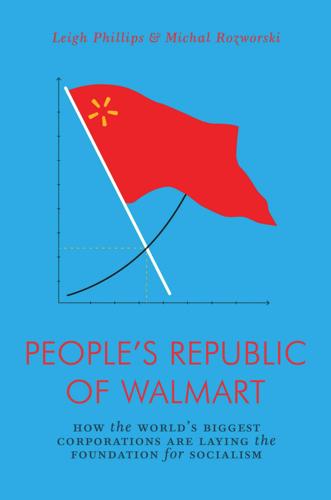
The People's Republic of Walmart: How the World's Biggest Corporations Are Laying the Foundation for Socialism
by
Leigh Phillips
and
Michal Rozworski
Published 5 Mar 2019
The focal points of Amazon’s distribution network are its warehouses, which the company calls “fulfillment centers.” These usually take up football fields’ worth of floor space jammed with shelving units. Amazon uses a peculiar form of organization called “chaotic storage,” in which goods are not actually organized: there is no section for books or subsection for mystery fiction. Everything is jumbled together. You can find a children’s book sharing a bin or shelf with a sex toy, caviar next to dog kibble. Once again, powerful planning is what allows Amazon to save on what turns out to be needless warehouse organization. Every item that enters a fulfillment center gets a unique barcode.
…
Around the start of this decade, Amazon’s top operations managers determined that its warehouses were still too inefficient, and so they themselves went shopping for something better. In 2012 Amazon bought Kiva Systems, a robotics firm, and it now uses robots to put its entire shelving system into motion. Amazon’s updated, even more automated fulfillment centers now feature shelves that move and humans who stand in place—the opposite of what a warehouse normally looks like. Flat, Roomba-like robots rove the warehouse floor along designated pathways. They can lift entire shelving units just off the ground and maneuver them along the same pathways to “picking stations.”
…
The boosters at Wired magazine are in awe of the subjugation of the Chaplins in this twenty-first-century Modern Times: “The packing stations are a whirl of activity where algorithms test human endurance.” Other more critical reporting has been less kind to Amazon in fleshing out just what these endurance tests entail. In 2011 the Lehigh Valley, Pennsylvania, local paper, the Morning Call, investigated its nearby Amazon fulfillment center. Workers said they routinely faced impossible-to-meet targets, debilitating heat and constant threats of being fired. On the hottest days of the year, Amazon had paramedics on hand outside the warehouse to treat heat-exhausted workers—a cheap Band-Aid solution for Amazon that makes clear its low estimation of health and safety; apparently humane working conditions are not one of its algorithms’ optimization constraints.

The Stack: On Software and Sovereignty
by
Benjamin H. Bratton
Published 19 Feb 2016
See for example, Colin Marshall, “Amazon's New Downtown Seattle HQ: Victory for the City over Suburbia?” Guardian, May 22, 2014. http://www.theguardian.com/cities/2014/may/22/amazon-futuristic-new-downtown-seattle-hq-microsoft-nintendo. 62. For a partial list of the locations of Amazon fulfillment centers in North America, see Jennifer Dunn, “Locations of Amazon Fulfillment Centers,” Bottom Line (blog), March 17, 2014, http://outright.com/blog/locations-of-amazon-fulfillment-centers-2/. 63. In the essay “Utopia as Replication,” in Valences of the Dialectic (London: Verso, 2009), Fredric Jameson draws links between Walmart and certain infrastructural utopian potentiality. 64. On Amazon's ongoing implementation of robotic systems in its warehouse and distribution chain, see Sam Grobart, “Amazon's Robotic Future: A Work in Progress,” Bloomberg Business Week, November 30, 2012, 2012 http://www.bloomberg.com/bw/articles/2012-11-30/amazons-robotic-future-a-work-in-progress and Sarah O’Connor, “Amazon's Human Robots: They Trek 15 Miles a Day around a Warehouse, Their Every Move Dictated by Computers Checking Their Work.
…
The warehouse and supply chain centers that turn commands in databases into the traffic of real goods constitute a shadow network of itinerant packages and only slightly less itinerant laborers. Amazon and Walmart's fulfillment centers in places like Hebron, Kentucky, Goodyear, Arizona, and Fernley, Nevada, are staffed by a multitiered outsourced and re-outsourced population of sorters, packers, and movers. During Christmas, when demand for short-term labor is acute, Amazon will make use of “workampers,” often senior citizens moving in large recreational vehicles from one fulfillment center to another, coming and going from Amazon towns as demand dictates. Guest workers of the algorithms: Grandpa, the Wandering Morlock of The Cloud.9 Here we glimpse the prototype of a future Cloud feudalism.
…
While the Cloud may see urban nodes and fabrics as like any other material for computational expression, its main switches are themselves gathered into tight rings of intensive transcontinental hubs, centralizing bandwidth economies into a specific few cellular cities. Away from those bandwidth capitals, smaller Cloud data centers, assembly factories, fulfillment centers, call centers, and shipping ports dot more remote geographies and gather itinerant laborers into their midst (or, alternatively, protect themselves against all human contact). In special cases, Cloud platforms design their own architectural footprints by gathering their higher-level cognitive-managerial functions into megastructural corporate headquarters, often city-scale buildings with backs turned on their immediate location (more on these below).

Blood in the Machine: The Origins of the Rebellion Against Big Tech
by
Brian Merchant
Published 25 Sep 2023
This newest wave of entrepreneurs consolidated their wealth and influence in much the same way that the nineteenth-century ones did—by using the new tech, or the idea of the tech, to squeeze workers harder and in more creative ways. Take the most infamous two, as of the 2020s. Jeff Bezos drove Amazon to global dominance by promising a cheaper and more efficient alternative to brick-and-mortar retail stores: an online shopping portal paired with hyper-efficient fulfillment centers and distribution nodes. What enabled Amazon to put so many mom-and-pop stores out of business, of course, was not just its technology but its army of part-time workers, toiling at blistering rates to keep pace with roboticized warehouses and delivery time projections, constantly surveilled to ensure they do.
…
The pandemic accelerated a trend already long underway: small businesses, whose margins were always thin and which depended on walk-ins and loyal local shoppers, were closing by the thousands, many permanently. Amazon, which had been investing heavily in automation and software logistics, and was expanding its fulfillment centers—the hulking new JFK8, which served most of New York City, was just a couple years old—ramped up hiring. Analysts forecasted another boom in automation; machines could do work that was too dangerous for humans in the time of a pandemic. But Amazon’s warehouses remained packed with people, mostly part-time and seasonal workers with no safety nets of their own.
…
They receive an automated email that offers them an orientation slot that may or may not align with the ones they saw listed when they applied. The orientation itself is completed online. When they are awarded the opportunity to report for a shift, those offerings, too, are automated. By the time someone leaves the fulfillment center—perhaps one that stretches out like an enormous brutalist shoebox across the Southern California desert or New York hinterlands—they might realize they had applied, attended orientation, taken a drug test, and been given a job at Amazon without ever once speaking directly to anyone who worked there.

The Internet Is Not the Answer
by
Andrew Keen
Published 5 Jan 2015
This shop-floor surveillance, Head says, is an “extreme variant” of nineteenth- and twentieth-century Taylorism—the scientific management system invented by Frederick Winslow Taylor, which Aldous Huxley savagely parodied as “Fordism” in Brave New World.49 Yet even without these monitoring technologies, work in the Amazon fulfillment centers is notoriously unpleasant. Nonunionized Amazon workers in Pennsylvania, for example, have been subjected to such high warehouse temperatures that the company has ambulances permanently parked outside the facility ready to speed overheated workers to the emergency ward.50 In its Kentucky delivery center, Amazon’s hyperefficient work culture has created what one former manager described as the “huge problems” of permanently injured workers.51 In Germany, Amazon’s second-largest market, 1,300 workers organized a series of strikes in 2013 over pay and working conditions as well as to protest a security firm hired to police the company’s distribution centers.52 In Britain, a 2013 BBC undercover investigation into an Amazon warehouse revealed disturbingly harsh working conditions that one stress expert warned could lead to “mental and physical illness” for workers.53 But I don’t suppose the libertarian venture capitalists care much about the many casualties of this war of the one percent—such as Pam Wetherington, a middle-aged woman at Amazon’s Kentucky operation who suffered stress fractures in both feet through walking for miles on the warehouse’s concrete floor, yet received no compensation from Bezos’s company when she could no longer work.54 Or Jennifer Owen, a ten-year veteran employee at the Kentucky warehouse who was summarily fired after returning to work from an Amazon-approved medical leave after a car accident.55 While Amazon is a nightmare for nonunionized workers like Wetherington and Owen, it has been a financial dream for investors like Tom Perkins’s KPCB, whose original $6 million investment would, by 2014, be worth around $20 billion.
…
Yes, Amazon may be hiring low-income, hourly, nonunionized laborers for its rapidly growing number of warehouses. But, like Google, Amazon is also massively investing in automated labor technology, with Jeff Bezos telling his investors in May 2014 that he expected to be using 10,000 robots in its fulfillment centers by the beginning of 2015.34 Thus in 2012 Amazon paid $775 million for Kiva Systems, a maker of robots for servicing warehouses. Kiva robots—which, by the way, are already being used by the Amazon-owned online shoe store Zappos (in Zappos’s hierarchy-free holacracy, all robots are presumably equal)—can retrieve and pick 200–400 items an hour.
…
“The difference,” Caldwell notes, between OkCupid’s experiment and parent and religious groups, “is that these groups actually loved the young people they were counselling, had a stake in ensuring things did not go wrong, would help as best they could if things did, and were not using the young lovers strictly as a means of making money.”45 We will be observed by every unloving institution of the new digital surveillance state—from Silicon Valley’s big data companies and the government to insurance companies, health-care providers, the police, and ruthlessly Benthamite employers like Jeff Bezos’s Amazon, with its scientifically managed fulfillment centers where the company watches over its nonunionized workforce. Big data companies will know what we did yesterday, today, and, with the help of increasingly accurate predictive technology, what we will do tomorrow. And—as in what Christopher Caldwell calls OkCupid’s “venal” experiment—the goal of these big data companies will be strictly to make money from our personal data rather than use it as a public service.
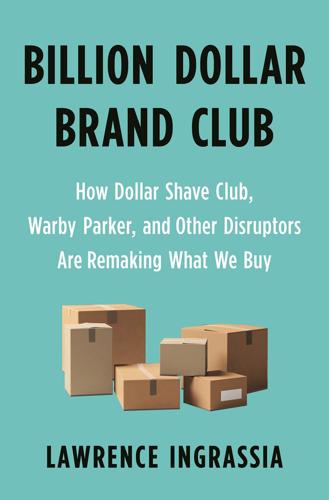
Billion Dollar Brand Club: How Dollar Shave Club, Warby Parker, and Other Disruptors Are Remaking What We Buy
by
Lawrence Ingrassia
Published 28 Jan 2020
By 2019, it had begun expanding: Email correspondence with Bruce Welty, cofounder and chief executive of Quiet Logistics, June 16, 2019; Quiet Logistics, “Quiet Logistics Eyes Global Expansion, Opening New Robot-Enabled Fulfillment Center in Los Angeles,” press release, July 17, 2019, https://www.prnewswire.com/news-releases/quiet-logistics-eyes-global-expansion-opening-new-robot-enabled-fulfillment-center-in-los-angeles-300886350.html. One of its main rivals, an autonomous mobile robot start-up: Shopify, “Shopify to Acquire 6 River Systems,” press release, September 9, 2019, https://www.businesswire.com/news/home/20190909005924/en/Shopify-Acquire-6-River-Systems.
…
“We got the bad news”: Amazon, “Amazon.com to Acquire Kiva Systems Inc.,” press release, March 19, 2012, https://press.aboutamazon.com/news-releases/news-release-details/amazoncom-acquire-kiva-systems-inc/. shipped five billion packages in 2017: Amazon, “Amazon’s Best of Prime 2017 Reveals the Year’s Biggest Trends—More than 5 Billion Items Shipped with Prime in 2017,” press release, January 2, 2018. By 2019, it operated: MWPVL International, “Amazon Global Fulfillment Center Network,” May 2019, http://www.mwpvl.com/html/amazon_com.html. Amazon puts the figure at 270, but that doesn’t include some facilities, such as distribution centers operated by Amazon’s Whole Foods subsidiary. With more than two hundred thousand robots: Lauren Feiner, “Amazon Shows Off Its New Warehouse Robots That Can Automatically Sort Packages,” CNBC, June 5, 2019, https://www.cnbc.com/2019/06/05/amazon-shows-off-its-new-warehouse-robots.html; Nick Wingfield, “As Amazon Pushes Forward with Robots, Workers Find New Roles,” New York Times, September 10, 2017, https://www.nytimes.com/2017/09/10/technology/amazon-robots-workers.html.
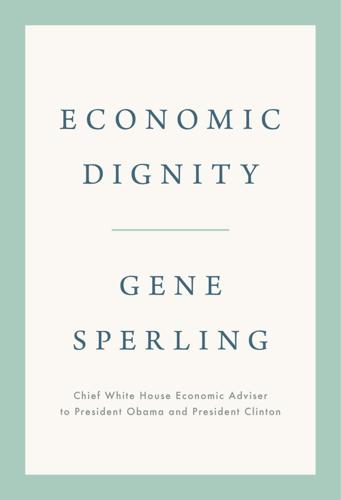
Economic Dignity
by
Gene Sperling
Published 14 Sep 2020
Debbie Berkowitz and Hooman Hedayati, “OSHA Severe Injury Data from 29 States: 27 Workers a Day Suffer Amputation or Hospitalization; Poultry Processing among Most Dangerous Industries,” National Employment Law Project, April 2017, https://s27147.pcdn.co/wp-content/uploads/OSHA-Severe-Injury-Data-2015-2016.pdf. 86. About 125,000 people are employed in Amazon fulfillment centers in the United States. Chavie Lieber, “Suicide Attempts and Mental Breakdowns: 911 Calls from Amazon Warehouses Reveal That Some Workers Are Struggling,” Vox, March 11, 2019, https://www.vox.com/the-goods/2019/3/11/18260472/amazon-warehouse-workers-911-calls-suicide. 87. Michael Sainato, “‘We Are Not Robots’: Amazon Warehouse Employees Push to Unionize,” Guardian, January 1, 2019, https://www.theguardian.com/technology/2019/jan/01/amazon-fulfillment-center-warehouse-employees-union-new-york-minnesota. This estimate was confirmed by at least several other employees; see Greg Bensinger, “‘MissionRacer’: How Amazon Turned the Tedium of Warehouse Work into a Game,” Washington Post, May 21, 2019, https://www.washingtonpost.com/technology/2019/05/21/missionracer-how-amazon-turned-tedium-warehouse-work-into-game/. 88.
…
Alana Semuels, “What Amazon Does to Poor Cities,” Atlantic, February 1, 2018, https://www.theatlantic.com/business/archive/2018/02/amazon-warehouses-poor-cities/552020/; and Alexia Fernandez Campbell, “The Problem with Amazon’s Speedy Shipping in One Graphic,” Vox, October 18, 2019, https://www.vox.com/identities/2019/10/18/20920717/amazon-shipping-workers-injuries. 89. Colin Lecher, “How Amazon Automatically Tracks and Fires Warehouse Workers for ‘Productivity,’” Verge, April 25, 2019, https://www.theverge.com/2019/4/25/18516004/amazon-warehouse-fulfillment-centers-productivity-firing-terminations. 90. Shona Ghosh, “Peeing in Trash Cans, Constant Surveillance, and Asthma Attacks on the Job: Amazon Workers Tell Us Their Warehouse Horror Stories,” Business Insider, May 5, 2018, https://www.businessinsider.com/amazon-warehouse-workers-share-their-horror-stories-2018-4. 91.
…
Emily Guendelsberger, On the Clock: What Low-Wage Work Did to Me and How It Drives America Insane (New York: Little, Brown, 2019), 11. 44. Guendelsberger, On the Clock, 7–8. 45. Guendelsberger, On the Clock, 6–7. 46. Michael Sainato, “‘We Are Not Robots’: Amazon Warehouse Employees Push to Unionize,” Guardian, January 1, 2019, https://www.theguardian.com/technology/2019/jan/01/amazon-fulfillment-center-warehouse-employees-union-new-york-minnesota; and Noam Scheiber, “Inside an Amazon Warehouse, Robots’ Ways Rub Off on Humans,” New York Times, July 3, 2019, https://www.nytimes.com/2019/07/03/business/economy/amazon-warehouse-labor-robots.html. 47. Matthew Desmond, “American Capitalism Is Brutal; You Can Trace That to Slavery,” New York Times, August 14, 2019, https://www.nytimes.com/interactive/2019/08/14/magazine/slavery-capitalism.html. 48.
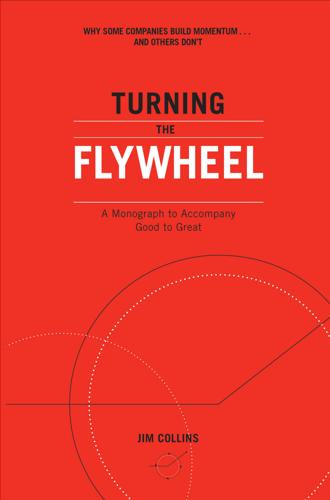
Turning the Flywheel: A Monograph to Accompany Good to Great
by
Jim Collins
Published 26 Feb 2019
As Brad Stone later wrote in The Everything Store, “Bezos and his lieutenants sketched their own virtuous cycle, which they believed powered their business. It went something like this: Lower prices led to more customer visits. More customers increased the volume of sales and attracted more commission-paying third-party sellers to the site. That allowed Amazon to get more out of fixed costs like the fulfillment centers and the servers needed to run the website. This greater efficiency then enabled it to lower prices further. Feed any part of this flywheel, they reasoned, and it should accelerate the loop.” And so, the flywheel would turn, building momentum. Push the flywheel; accelerate momentum. Then repeat.

Competing on Analytics: The New Science of Winning
by
Thomas H. Davenport
and
Jeanne G. Harris
Published 6 Mar 2007
They ultimately invented a proprietary inventory model employing nonstationary stochastic optimization techniques, which allows them to model and optimize the many variables associated with their highly dynamic, fast-growing business. Amazon.com sells over thirty categories of goods, from books to groceries to industrial and scientific tools. The company has a variety of fulfillment centers for different goods. When Amazon.com launches a new goods category, it uses analytics to plan the supply chain for the goods and leverage the company’s existing systems and processes. To do so, it forecasts demand and capacity at the national level and fulfillment center level for each SKU. Its supply chain analysts try to optimize order quantities to satisfy constraints and minimize holding, shipping, and stock-out costs. In order to optimize its consumer goods supply chain, for example, it used an “integral min-cost flow problem with side constraints”; to round off fractional shipments, it used a “multiple knapsack problem using the greedy algorithm.”
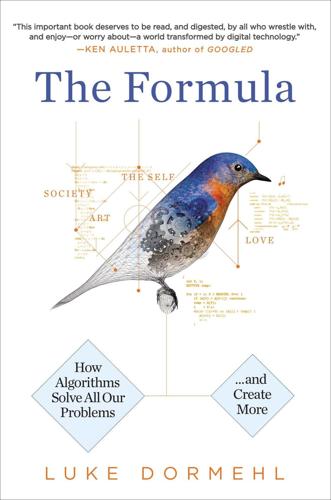
The Formula: How Algorithms Solve All Our Problems-And Create More
by
Luke Dormehl
Published 4 Nov 2014
Daily Mail, February 28, 2013. dailymail.co.uk/news/article-2286227/Amazons-human-robots-Is-future-British-workplace.html. 31 O’Connor, Sarah. “Amazon Unpacked.” FT Magazine, February 8, 2013. ft.com/cms/s/2/ed6a985c-70bd-11e2-85d0-00144feab49a.html#slide0. 32 Brownlee, John. “Think Your Office Is Soulless? Check Out This Amazon Fulfillment Center.” Fast Company, July 1, 2013. fastcodesign.com/1672939/think-your-office-is-soulless-check-out-this-amazon-fulfillment-center#disqus_thread. 33 Rawlinson, Kevin. “Tesco Accused of Using Electronic Armbands to Monitor Its Staff.” Independent, February 13, 2013. independent.co.uk/news/business/news/tesco-accused-of-using-electronic-armbands-to-monitor-its-staff-8493952.html. 34 This version of the quote was reprinted in a 1960 Time magazine article.
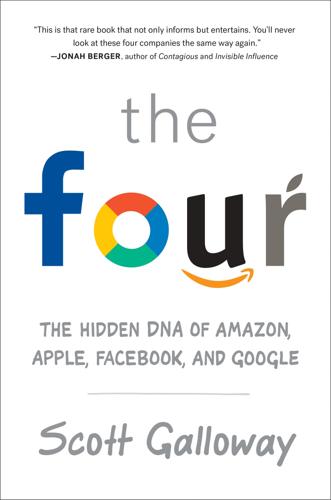
The Four: How Amazon, Apple, Facebook, and Google Divided and Conquered the World
by
Scott Galloway
Published 2 Oct 2017
Rao, Leena. “Amazon Prime Now Has 80 Million Members.” Fortune. April 25, 2017. http://fortune.com/2017/04/25/amazon-prime-growing-fast/. 66. Griffin, Justin. “Have a look inside the 1-million-square-foot Amazon fulfillment center in Ruskin.” Tampa Bay Times. March 30, 2016. http://www.tampabay.com/news/business/retail/have-a-look-inside-the-1-million-square-foot-amazon-fulfillment-center-in/2271254. 67. Tarantola, Andrew. “Amazon is getting into the oceanic freight shipping game.” Engadget. January 14, 2016. https://www.engadget.com/2016/01/14/amazon-is-getting-into-the-oceanic-freight-shipping-game/. 68.

Listen, Liberal: Or, What Ever Happened to the Party of the People?
by
Thomas Frank
Published 15 Mar 2016
Jobs then forwarded Schmidt’s email around with this comment appended: “:)”19 Amazon, meanwhile, is famous for devising ways to goad its executives into fighting with one another—engaging in what the New York Times calls an “experiment in how far it can push white-collar workers”—while its blue-collar workers, often recruited through local temp agencies, are electronically tracked so that their efficiency is maximized as they go about assembling items in the company’s enormous fulfillment centers.20 For the rest of us, Amazon has come up with a nifty device for casual employment called “the Mechanical Turk,” in which tasks that can’t be done by computers are tossed to the reserve army of the millions, who receive pennies for their trouble. This last is a good introduction to the so-called sharing economy—“sharing” because you’re using your own car or apartment or computer, not your employer’s—which has been one of the few robustly growing employment opportunities of the Obama years.
…
See also the Economic Policy Institute’s report, “The Increasingly Unequal States of America,” dated January 26, 2015. http://www.epi.org/publication/income-inequality-by-state-1917-to-2012. 14. See the U.S. Census Bureau’s State and County QuickFacts. The unemployment percentage is drawn from an ABC News story by Samantha Lavien, “Fall River Unemployment Rate Is the Worst in MA,” March 11, 2014. 15. See Jessica Geller, “Amazon Inks Deal on Fulfillment Center in Fall River,” Boston Globe, November 24, 2015. 16. “Fall River’s on the Bike Trail to Nowhere,” Fall River Herald-News, October 11, 2015; “Stand Up, Wal-Mart!,” creators.com, October 15, 2012; “Notes from a Liquor Store Before the Debate,” creators.com, October 8, 2012. 17. Dion, “A Sicker Fall River Eases Its Pain By Getting High,” Fall River Herald-News, October 4, 2015. 18.
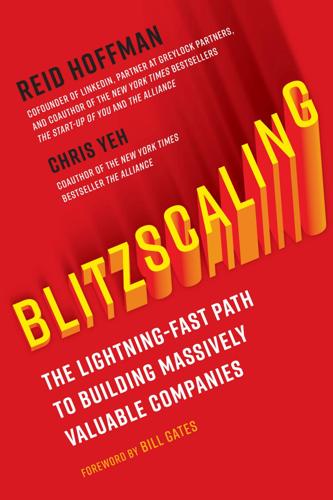
Blitzscaling: The Lightning-Fast Path to Building Massively Valuable Companies
by
Reid Hoffman
and
Chris Yeh
Published 14 Apr 2018
Brad Stone summarized this approach in his book on Amazon, The Everything Store: Lower prices led to more customer visits. More customers increased the volume of sales and attracted more commission-paying third-party sellers to the site. That allowed Amazon to get more out of fixed costs like the fulfillment centers and the servers needed to run the website. This greater efficiency then enabled it to lower prices further. Feed any part of this flywheel, they reasoned, and it should accelerate the loop. Yet as impressive as Amazon’s flywheel is, when compared with the powerful superlinear effect of most network effects, it is merely linear or sublinear.
…
Amazon is so good at infrastructure that its fastest-growing and most profitable business (AWS) is all about allowing other companies to leverage Amazon’s computing infrastructure. Amazon also makes money by offering Fulfillment by Amazon to other merchants who envy its mastery of logistics, which ought to strike fear into the hearts of frenemies like UPS and FedEx. In addition to its eighty-six gigantic fulfillment centers, Amazon also has at least fifty-eight Prime Now hubs in major markets, allowing it to beat UPS and FedEx on performance by offering same-day delivery of purchases in less than two hours. Amazon has also built out “sortation” centers that let it beat UPS and FedEx on price by shipping small packages via the United States Postal Service for about $1 rather than paying FedEx or UPS around $4.50.

The Content Trap: A Strategist's Guide to Digital Change
by
Bharat Anand
Published 17 Oct 2016
When Amazon set up operations, in 1997, delivery took about seven days—around 6 days and 23 hours longer than it would take to drive to the nearest Barnes & Noble. That’s longer than most customers will accept. To reduce delivery times, Amazon began building distribution and warehousing facilities. By 2015 it had more than fifty fulfillment centers, representing billions of dollars in capital expenditures. It had created a massive fixed-cost operation—expensive to build, but advantageous to scale. As Amazon grew, so did its cost advantage. By 2002, for every $50 million in growth, Amazon’s per unit costs fell by roughly 30 cents—a substantial advantage in a business where margins are tiny.
…
By 2002, for every $50 million in growth, Amazon’s per unit costs fell by roughly 30 cents—a substantial advantage in a business where margins are tiny. For more than a decade, Amazon’s approach to managing fixed costs has been curiously similar to Walmart’s. In 2002 Amazon launched its version of store clustering with Marketplace, inviting other retailers to use its website and fulfillment centers for a fee. The risk was cannibalization of Amazon’s own sales, but the benefit was spreading fixed costs over a greater volume. From 2001 to 2006 Amazon launched its version of Walmart’s IT strategy by increasing its investments in IT servers—it built more than two million across the United States.
…
Amazon’s story in e-commerce has been eerily similar to Walmart’s in physical commerce. The reasons why competing retailers found it hard to match Amazon in the U.S. market—the difficulties of reproducing its distribution centers, warehouses, and fulfillment operations—are precisely why it has been harder for Amazon to quickly scale abroad. By 2013 Amazon had nearly fifty fulfillment centers in the United States but just over forty in the rest of the world. Of those, more than thirty-five were located in a mere four geographies (the United Kingdom, Germany, China, and Japan), leaving the rest of the world open to an array of local e-commerce entrepreneurs. Adapters—and How They Break Connections The Rise of Flipkart Flipkart is the leading e-commerce player in India.
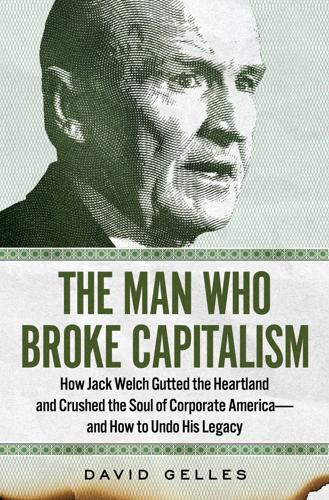
The Man Who Broke Capitalism: How Jack Welch Gutted the Heartland and Crushed the Soul of Corporate America—and How to Undo His Legacy
by
David Gelles
Published 30 May 2022
At WeWork—the shared office space company—cofounder Adam Neumann set a goal of laying off 20 percent of the company’s workforce every year. “We met those expectations, and I’m not proud of it,” said one member of WeWork’s human resources staff. And at Amazon—one of the world’s largest corporations—worker well-being seems to be but an afterthought. Amazon manages more than a million employees across its vast fulfillment centers, fleets of delivery trucks, and office parks, eclipsed only by Walmart, which employs two million people. The e-commerce giant is among the most prolific recruiters and employers in the country. Yet even while employing such a significant swath of the populous, Amazon’s overriding concern is not the resilience and economic security of the many souls that don safety vests emblazoned with its ubiquitous curved arrow logo.
…
Given the evaporation of manufacturing jobs—and the decimation of local retail thanks to Amazon itself—the company has an easy time recruiting. In so many zip codes where factories once flourished, warehouse jobs are just about the only options for employment, and local politicians try to outdo one another with bigger tax breaks in hopes of landing the next Amazon fulfillment center. But it is not only the Amazon workers in warehouses and on the road who suffer from Bezos’s apparent campaign against loyalty. As was the case at GE, even those in management must endure a state of perpetual anxiety. While Amazon executives are well paid, generous compensation is no guarantee of lifetime employment.
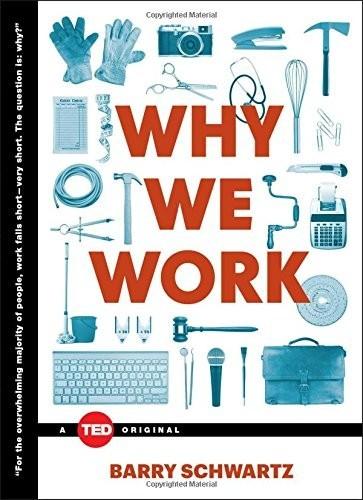
Why We Work
by
Barry Schwartz
Published 31 Aug 2015
Taylor, in his book The Principles of Scientific Management, laid out in microscopic detail the best ways to divide production into individual jobs, so that little skill or attention was required, and the best way to arrange pay, so that maximum effort would be produced. Factories like this have mostly left American shores, but one sees the same pattern played out in modern versions of the factory, like call centers and order-fulfillment centers. Workers in both environments are micromanaged. In call centers, they’re given detailed scripts to follow (which is necessary, since they are often located in a different country, thousands of miles away, have trouble with the language and, beyond the scripts, know almost nothing of the products or services about which they are taking calls.)

A World Without Work: Technology, Automation, and How We Should Respond
by
Daniel Susskind
Published 14 Jan 2020
A convoy of semiautonomous trucks completed their first trip across Europe in 2016, “platooning” with one another: the front vehicle controlled the speed, and the others automatically followed its lead. (For the moment, there was still a driver in each seat.)22 And in the future, deliveries may not be done on the road at all. Amazon has filed patents for “drone nests,” large beehive-like buildings designed to house fleets of autonomous flying delivery robots, and for “airborne fulfillment centers,” airships that cruise at forty-five thousand feet full of products ready for drone delivery.23 Airborne robotic delivery might sound fanciful, and Amazon’s patents may seem just an attempt to stir up some attention. Yet it is worth remembering that Amazon is among the most advanced users of robotics, with a fleet of over one hundred thousand ground-based robots across its warehouses.24 And some robots today are already capable of accomplishing remarkable physical feats, like opening doors and climbing walls, ascending stairs and landing backflips, carrying cables over harsh terrain and knotting ropes together in midair.25 Meanwhile, the global population of industrial robots is rising steadily: the International Federation of Robotics, a trade association, anticipates there will be more than three million of them in operation in 2020, double the number in 2014.27 Figure 5.1: Global Stock of Industrial Robots (000’s)26 The car manufacturing industry provides a good case study of task encroachment unfolding in the industrial world.
…
abandonment ability bias Acemoglu, Daron adaptive learning systems admissions policies, conditional basic income and affective capabilities affective computing Age of Labor ALM hypothesis and optimism and overview of before and during twentieth century in twenty-first century Agesilaus AGI. See artificial general intelligence agoge agriculture Airbnb airborne fulfillment centers Alaska Permanent Fund Alexa algorithms alienation al-Khwarizmi, Abdallah Muhammad ibn Musa ALM (Autor-Levy-Murnane) hypothesis AlphaGo AlphaGo Zero AlphaZero Altman, Sam Amara, Roy Amazon artificial intelligence and changing-pie effect and competition and concerns about driverless vehicles and market share of network effects and profit and Andreessen, Marc ANI.

You've Been Played: How Corporations, Governments, and Schools Use Games to Control Us All
by
Adrian Hon
Published 14 Sep 2022
United Airlines’ attempt in 2018 to replace bonuses with a much cheaper gamified lottery was a little too transparent, resulting in its swift reversal amid worker fury, but other companies have been more successful in effectively cutting salaries and bonuses by means of gamification, particularly amongst low-wage employees.3 In Emily Guendelsberger’s book On the Clock: What Low-Wage Work Did to Me and How It Drives America Insane, she describes the reward Amazon warehouse workers get if they make a hundred picks in an hour: one or two “vendor dollars” valid in some (but not all) of the vending machines in the building. In 2019, Postyn Smith, another former Amazon warehouse worker, described the more sophisticated FC Games (after “Fulfillment Center,” Amazon’s name for its warehouses) he encountered on screens in stowing and picking stations, the department with the highest attrition rate at his warehouse: “Most of the games involve some aspect of competition. You might race one-on-one as flying dragons against a nearby worker or compete as a floor against another floor for your Amazon mascot to run faster around the course.
…
Austin Wendt ran the first aid clinic at Amazon’s warehouse BF13 in DuPont, Washington, in 2016 and recalled warehouse leaders offering pizza parties as a reward for a streak of injury-free shifts, “so some pickers kept quiet about their injuries to avoid costing their coworkers pizza.”23 People of colour carry a disproportionate risk of injury because they made up 68 percent of Amazon’s warehouse workers in 2018.24 Perhaps aware that his company’s warehouses had a serious injury rate almost twice that of the rest of the industry in 2020, or stung by the criticism that “our employees are sometimes accused of being desperate souls and treated as robots,” Amazon CEO Jeff Bezos announced in 2021 the company was “developing new automated staffing schedules that use sophisticated algorithms to rotate employees among jobs that use different muscle-tendon groups to decrease repetitive motion and help protect employees from [musculoskeletal disorder] risks.”25 This may improve matters, though it also illustrates the total control the company has over its workers’ very movements, as if they were, indeed, computer-controlled robots made of meat. One member of a Reddit community for Amazon fulfillment center workers complained of a screen instructing them to perform “Savoring,” in which they were told to “close your eyes and think about something that makes you happy.”26 Companies that treat their workers like the robots they wish to replace them with also motivate workers by telling them they’re part of a greater mission.

The Kickstarter Handbook: Real-Life Success Stories of Artists, Inventors, and Entrepreneurs
by
Steinberg, Don
Published 14 Aug 2012
As a successful campaign creator, you will be able to send a postcampaign survey to all your backers requesting their shipping addresses and product preferences, that is, if they have choices to make (colors, sizes, and the like). Kickstarter provides you with a spreadsheet containing all of your backers’ information, and you can use that list to produce mailing labels, or hand-address packages, or give the spreadsheet to a fulfillment center that will handle shipping logistics for a fee. You have only one opportunity to send out this official survey, so some campaign creators, instead of sending it out immediately, will wait until their rewards are ready to ship, ensuring that they will have gathered the most current addresses for all recipients and know exactly what the product options will be.

Automation and the Future of Work
by
Aaron Benanav
Published 3 Nov 2020
Undeniably, some firms are investing in robotics in response to COVID-19. For example, Walmart has purchased self-driving, inventory scanning, and aisle cleaning robots for its US stores. Expecting online ordering to continue to expand exponentially, some retail shops are testing out—but not yet widely implementing—robotics assisted micro-fulfillment centers, to help pickers assemble orders more quickly.49 However, these are likely to be exceptions to the rule for the foreseeable future. With little reason to expect the demand for their products to increase following the onset of a deep recession, few firms will undertake major new investments.

Last Best Hope: America in Crisis and Renewal
by
George Packer
Published 14 Jun 2021
A cog in a machine, denied the last ounce of free agency, cannot acquire the habits and skills—negotiating, cooperating, deciding—that citizens need to realize their full potential. It was true a century ago of the Steel Trust, with its punch clocks, and it’s true now of Amazon, with its scheduling algorithms. The postindustrial workforce is weak and scattered across various sectors, most of them dominated by a few giant corporations. When Amazon opens a “fulfillment center” in a declining community, its size immediately gives it control over the local job market, allowing it to dictate wages and eliminate competition that might offer better jobs at better pay. One way to give labor more power is to make it easier to organize workers by passing labor law reform bills—the perennial campaign promises of Democratic candidates that go perennially unfulfilled.

The Best Business Writing 2013
by
Dean Starkman
Published 1 Jan 2013
Journalism done right, we firmly believe, means hearing from everybody, which is what we liked about Jeff Tietz’s piece in Rolling Stone on the precariousness of a middle-class lifestyle, one of the best stories on unemployment that you will ever read. Ditto for Paul Kiel’s foreclosure story for ProPublica. And do not miss Mac McClelland’s first-person account for Mother Jones of what it’s really like to work in a digital retailer’s “fulfillment center,” better known as a warehouse. But, this year, nothing quite had the power of the pieces that were written by nonjournalists: letters about banks and bankers written by everyday people caught up in the debt trap and collected in The Trouble Is the Banks: Letters to Wall Street. We picked five; we could have chosen many more.
…
Still, most people really don’t know how most Internet goods get to them. The ecommerce specialist didn’t even know, and she was in charge of choosing the 3PL for her midsize online-retail company. “These decisions are made at a business level and are based on cost,” she says. “I never, ever thought about what they’re like and how they treat people. Fulfillment centers want to keep clients blissfully ignorant of their conditions.” If you called major clothing retailers, she ventured, and asked them “what it was like at the warehouse that ships their sweaters, no one at company headquarters would have any fucking clue.” Further, she said, now that I mentioned it, she has no idea how to go about getting any information on the conditions at the 3PL she herself hired.

Your Computer Is on Fire
by
Thomas S. Mullaney
,
Benjamin Peters
,
Mar Hicks
and
Kavita Philip
Published 9 Mar 2021
This perhaps explains in part why, despite the emphasis in the digital economy on light, flexible startups, many sectors of that economy are controlled by an increasingly small number of large and established incumbents. The growing belief that the United States is in the midst of a modern Gilded Age is about more than concern about wealth inequity.11 Figure 1.1 Existing and projected Amazon small sortable fulfillment centers in the United States. Given the perceived shift in recent decades (in the Western world, at least) from an industrial to a postindustrial society, the continued dependence of information-economy firms like Amazon on material infrastructure and the manipulation of physical objects is surprising, if not paradoxical.
…
Anna Schaverien, “Five Reasons Why Amazon Is Moving into Bricks-and-Mortar Retail,” Forbes (December 29, 2018), https://www.forbes.com/sites/annaschaverien/2018/12/29/amazon-online-offline-store-retail/#23b1d1f55128. 3. Ashley Carman, “Amazon Shipped over 5 Billion Items Worldwide through Prime in 2017,” The Verge (January 2, 2018), https://www.theverge.com/2018/1/2/16841786/amazon-prime-2017-users-ship-five-billion. 4. “Amazon Global Fulfillment Center Network,” MWPVL International, accessed August 21, 2018, http://www.mwpvl.com/html/amazon_com.html. 5. Marcus Wohlsen, “Amazon Sets Up (Really Big) Shop to Get You Your Stuff Faster,” Wired (January 23, 2013), https://www.wired.com/2013/01/amazon-distribution-centers/. 6. Michael Lierow, Sebastian Jannsen, and Joris D’Inca, “Amazon Is Using Logistics to Lead a Retail Revolution,” Forbes (February 21, 2016), https://www.forbes.com/sites/oliverwyman/2016/02/18/amazon-is-using-logistics-to-lead-a-retail-revolution/. 7.
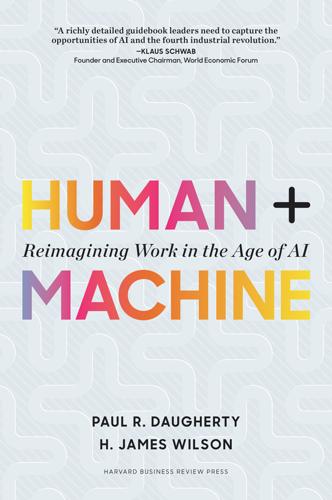
Human + Machine: Reimagining Work in the Age of AI
by
Paul R. Daugherty
and
H. James Wilson
Published 15 Jan 2018
Embodiment, as demonstrated in the human-robot systems that many manufacturers are using, is opening up more job opportunities: some people who may have ruled out manual labor as a work option—because of age or physical condition—may be able to do the work with the aid of cobots. A similar collaborative dynamic is on display at warehouses. At Amazon fulfillment centers, shelves full of merchandise seem to independently glide down the warehouse aisles toward a human worker who’s awaiting the delivery. The shelves are carried by squat, rolling robots destined to bring the goods to the worker, who plucks the items off the shelves and puts them in a box to ship.

Hit Refresh: The Quest to Rediscover Microsoft's Soul and Imagine a Better Future for Everyone
by
Satya Nadella
,
Greg Shaw
and
Jill Tracie Nichols
Published 25 Sep 2017
Eric and his family have personally helped to fund Stanford University’s One Hundred Year Study; at regular intervals for the coming century, it will report on near-term and long-term socioeconomic, legal, and ethical issues that may come with the rise of competent intelligent computation, the changes in perceptions about machine intelligence, and likely changes in human-computer relationships. In their first report, Artificial Intelligence and Life in 2030, the study panel noted that AI and robotics will be applied “across the globe in industries struggling to attract younger workers, such as agriculture, food processing, fulfillment centers and factories.” The report found no cause for concern that AI is an imminent threat to humankind. “No machines with self-sustaining long-term goals and intent have been developed, nor are they likely to be developed in the near future.” While there is no clear road map for what lies ahead, in previous industrial revolutions we’ve seen society transition, not always smoothly, through a series of phases.
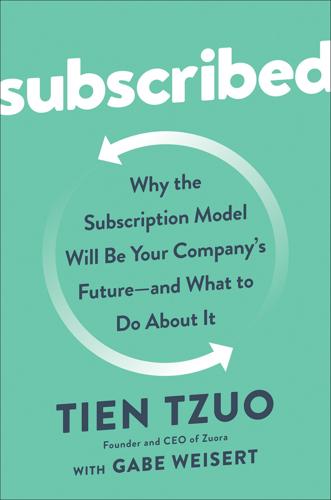
Subscribed: Why the Subscription Model Will Be Your Company's Future - and What to Do About It
by
Tien Tzuo
and
Gabe Weisert
Published 4 Jun 2018
Particularly for things like groceries and staples, some sort of expedited pickup or delivery is the new table stakes. Retailers are working with car companies to develop trunk locks with independent cryptosecurity features so that third parties can deliver dry cleaning or groceries to your car while you’re at work. Target is realizing that Amazon has around eighty fulfillment centers in the United States, while it has potentially eighteen hundred. Like Walgreens, today Target is driving a ton of in-store pickup traffic through its app. Even the basic economic model of a retail store is being reinvented in all sorts of cool ways. b8ta, a retail store that sells trendy tech gadgets, doesn’t make any money from product sales.
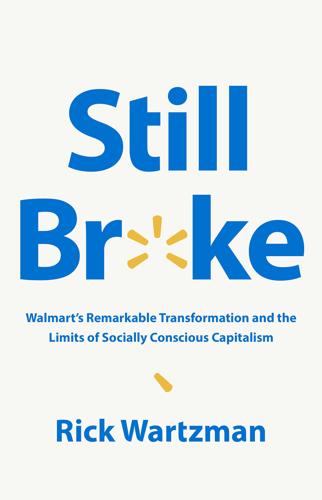
Still Broke: Walmart's Remarkable Transformation and the Limits of Socially Conscious Capitalism
by
Rick Wartzman
Published 15 Nov 2022
Under his direction, the company would, in time, winnow its foreign presence; buy the e-commerce site Jet.com for more than $3 billion—and then shut it down; otherwise rev up its online business by introducing new services and expanding its stable of third-party sellers; unveil a subscription program, akin to Amazon Prime, called Walmart+; build local fulfillment centers—compact warehouses powered by robotics and artificial intelligence—right in its stores; dive into digital advertising; cultivate customers on TikTok, the viral video app; venture into the metaverse and the worlds of cryptocurrency and nonfungible tokens; deliver products by drone and driverless truck; put groceries right into people’s fridges while they weren’t home; open health clinics and offer medical insurance; launch a financial technology startup; buy the menswear company Bonobos; buy and sell the women’s apparel company ModCloth; beef up its fashion brands by hiring a creative director, Brandon Maxwell, who, as Vogue observed, was in a coterie of designers who typically took on engagements in Paris or Milan, not Bentonville; and much, much more.
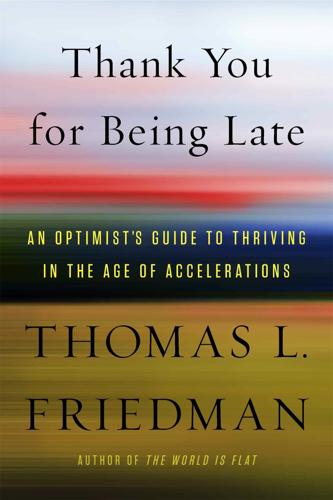
Thank You for Being Late: An Optimist's Guide to Thriving in the Age of Accelerations
by
Thomas L. Friedman
Published 22 Nov 2016
But then I heard one of my favorite quotes in researching this book. After I pressed “buy,” the system used my zip code to determine whether there was a 32-inch television in a Walmart store near me where I could drive in and pick it up, or my TV could be delivered from a Walmart store in the region, or it had to come out of one of the new mega Walmart fulfillment centers dedicated to online orders—each of which could house two cruise ships. With some products, the Walmart system has already anticipated increased demand and prepositioned stock to serve the customer at the cheapest price everywhere: that means shovels in Michigan in winter, golf balls in Florida year-round, and big-screen televisions and Doritos in the week before Super Bowl Sunday.
…
Now, however, the system has to go through a whole other set of optimizations to get the best delivery-pickup solution or some combination of the two. It does this based on your location, other items you may have bought besides the 32-inch television, where they might be coming from, and what size and how many boxes they may require. There are myriad combinations to sort through, given Walmart’s four thousand stores and multiple fulfillment centers. “There are about four hundred thousand variables,” said King. But now that you—the customer—have already made the purchase and are not waiting online, he added, “we have time, so we do it in under a second.” I started to laugh. “What did you just say?” I asked him, incredulous. “Once I press ‘buy,’ you have all kinds of time.

Power and Progress: Our Thousand-Year Struggle Over Technology and Prosperity
by
Daron Acemoglu
and
Simon Johnson
Published 15 May 2023
Human-complementary technology: Douglas Engelbart’s mouse to control a computer, introduced at the “Mother of All Demos” in 1968. 27. So-so automation: customers trying to do the work, and sometimes failing, at self-checkout kiosks. 28. Facebook deciding what is and what is not fit for people to see. 29. Monitoring workflow inside an Amazon fulfillment center. 30. Digital surveillance with Chinese characteristics: a machine for checking social credit scores in China. 31. Milton Friedman: “The social responsibility of business is to increase its profits.” 32. Ralph Nader: “The unconstrained behavior of big business is subordinating our democracy to the control of a corporate plutocracy that knows few self-imposed limits.…” 33.
…
The World for a Shilling: How the Great Exhibition of 1851 Shaped a Nation. London: Headline. Leaver, E. W., and J. J. Brown. 1946. “Machines Without Men.” Fortune, November 1. Lecher, Colin. 2019. “How Amazon Automatically Tracks and Fires Warehouse Workers for ‘Productivity.’” Verge, April 25. www.the verge.com/2019/4/25/18516004/amazon-warehouse-fulfillment-centers-productivity-firing-terminations. Lee, Kai-Fu. 2021. “How AI Will Completely Change the Way We Live in the Next 20 Years.” Time, September 14. https://time.com/6097625/kai-fu-lee-book-ai-2041. Lee, Kai-Fu, and Chen Qiufan. 2021. AI 2041: Ten Visions for Our Future. New York: Currency. Lehner, Mark. 1997.

After the New Economy: The Binge . . . And the Hangover That Won't Go Away
by
Doug Henwood
Published 9 May 2005
Early in the tech boom—Hke when Amazon.com went pubHc in the lush and hopeful spring of 1997—it was thought that e-tailers could serve miUions of customers without building a major distributional system; a small staff of marketers and programmers would contract out all the boring stuff, like warehousing, shipping, and customer service. But e-merchants found that if they didn't do this sort of thing themselves, it was hard to do it well. So they had to get involved in the messy business of building warehouses and fulfillment centers—those that survived, that is. But the e-tailers didn't founder only on their need for a physical infrastructure; they discovered they needed lots of low-wage workers to pick and pack or respond to customer emails. Amazon.com, one of the few survivors, pays its cubicle-dwellers—college grads, many of them with advanced degrees and even books to their name (ones they've written, not wrapped and mailed)—around $10 an hour with no benefits to pseudo-personalize canned email responses to customer queries and complaints.
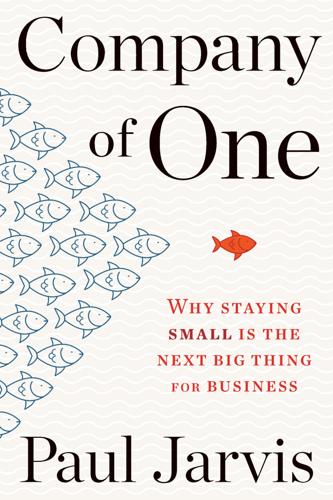
Company of One: Why Staying Small Is the Next Big Thing for Business
by
Paul Jarvis
Published 1 Jan 2019
During those first two years he lived off his salary from the full-time job and invested all the profits from Ugmonk back into his company of one until there was enough momentum and scale to pay himself and the other people who worked with him. It wasn’t until his first tiny apartment became too crammed full of inventory that he moved to a larger warehouse and fulfillment center. Although Ugmonk was profitable from the beginning, Jeff has been careful not to scale too quickly. He moves slowly, iterating in small steps, slowly increasing production, the number of products, and what the company takes on. Like Need/Want from Chapter 8, Ugmonk still sells directly to customers, as it requires less staff and resources.
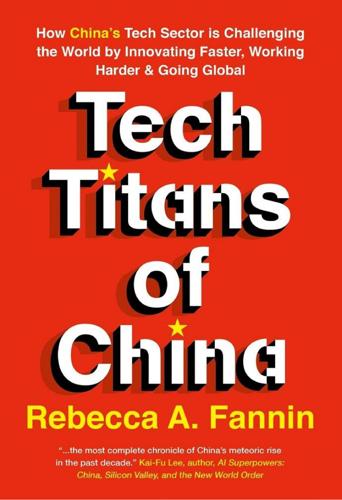
Tech Titans of China: How China's Tech Sector Is Challenging the World by Innovating Faster, Working Harder, and Going Global
by
Rebecca Fannin
Published 2 Sep 2019
Among other JD.com innovations are unmanned convenience stores, augmented reality mirrors for online shoppers to try on lipsticks and other cosmetics virtually, and a service where a well-dressed courier wearing white gloves drops off purchases at appointed times to car trunks or other designated spots. Digging deeper into e-commerce, JD.com has embarked on a strategy to provide technology and logistics smarts as a retail service for its merchants and other retailers. This new initiative includes robotics-operated fulfillment centers, big-data analysis of merchandise sales, and supply-chain management. The company’s logistics operation, which I saw at work in a Beijing warehouse, is pioneering with full automation. The operation spans to drones to reach rural areas, autonomous delivery vehicles on Beijing university campuses, and self-driving trucks on select routes.

Nomadland: Surviving America in the Twenty-First Century
by
Jessica Bruder
Published 18 Sep 2017
They planned to stay through early winter, despite the fact that most of their homes on wheels weren’t designed to support life in subzero temperatures. Their employer was Amazon.com. Amazon had recruited these workers as part of a program it calls CamperForce: a labor unit made up of nomads who work as seasonal employees at several of its warehouses, which the company calls “fulfillment centers,” or FCs. Along with thousands of traditional temps, they’re hired to meet the heavy shipping demands of “peak season,” the consumer bonanza that spans the three to four months before Christmas. Amazon doesn’t disclose precise staffing numbers to the press, but when I casually asked a CamperForce manager at an Amazon recruiting booth in Arizona about the size of the program, her estimate was some two thousand workers.
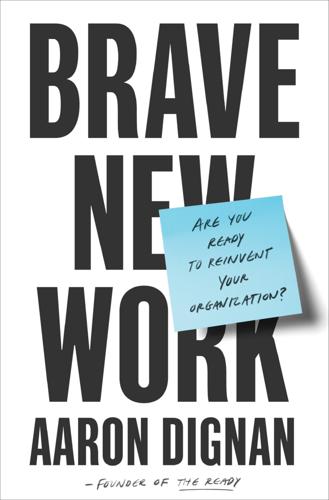
Brave New Work: Are You Ready to Reinvent Your Organization?
by
Aaron Dignan
Published 1 Feb 2019
Online retailer Zappos feels the same way. They famously offer new employees $1,000 to quit after their first week or so. Why? Because they want only team members who are passionate about being there. Amazon, which acquired Zappos in 2009, liked this program so much they made it an annual offer within their fulfillment centers, upping the ante to $5,000 for longtime employees. Buurtzorg founder Jos de Blok goes well beyond abandoning noncompetes. When competitors come to find out how his company is able to do what it does, he actively coaches them on how to adopt his methods. Today Buurtzorg collaborates with approximately 80 percent of all Dutch care providers.
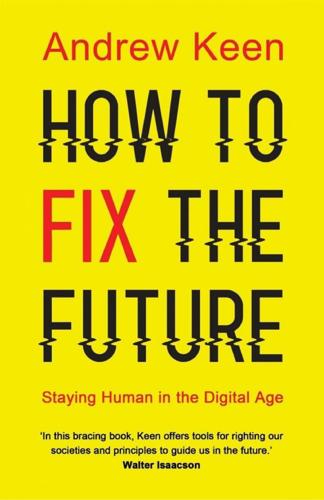
How to Fix the Future: Staying Human in the Digital Age
by
Andrew Keen
Published 1 Mar 2018
After all, it was the original vision of Google when he and Larry Page created their search engine as Stanford graduate students in 1998. Rather than funding interplanetary travel, Jeff Bezos should invest his money in figuring out how to employ people in an automated future, which Amazon—with its billions of dollars of investment in delivery drones and robot-operated fulfillment centers—is pioneering. This will be the greatest question of the twenty-first century and Bezos has both the financial resources and the intellectual discipline to confront this astonishingly complex issue. I sense that Bezos is only now really breaking into his stride as a public figure. Like Steve Jobs, he is a man of superhuman ambitions and abilities.

Industry 4.0: The Industrial Internet of Things
by
Alasdair Gilchrist
Published 27 Jun 2016
More often than not, the IIoT is portrayed as deploying high technology, such as augmented reality, RFID customer tracking with personalized advertising, and similar marketing concepts that would not fit easily with most retailers’ current or even future customers. 29 30 Chapter 2 | Industrial Internet Use-Cases The advantages of IoT are not delivered just through enhanced customer experience—many of the benefits come in the back store, in stock control, inventory management, perishable and cold chain management, and for larger operations, digital signage, fleet management, and smart fulfillment centers. As an example, three of the largest supermarkets in the UK reported savings of 50% after the adoption of the IIoT. For some retailers deploying IIoT solutions, it has meant installing a vast range of bewildering technologies, including hardware, sensors, devices, apps, telematics, data, and connectivity to the cloud.
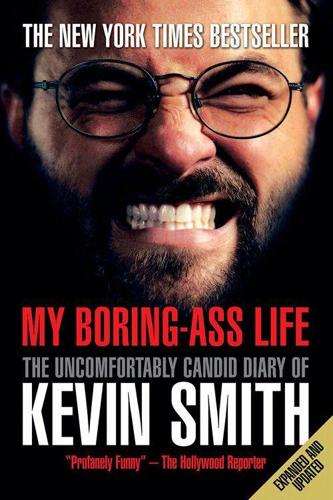
My Boring-Ass Life: The Uncomfortably Candid Diary of Kevin Smith
by
Kevin Smith
Published 24 Sep 2007
Fully packed, we start our drive to Vancouver. It’s a straight shot up on the 5, but since we’re leaving at about six, there’s a bunch of traffic. We clear the city and it’s smooth sailing. I call Don to tell him all the books are signed and we wind up talking for an hour. Turns out they’re moving the Online Stash fulfillment center to a warehouse space, as it’s gotten too big to keep in the offices they’d been in for the last year and a half. Don relates some amusingly horrifying tales of having to deal with the credit card companies until I lose connection to him in the mountains. Jen’s been buried in Newsweek the whole time, so she relishes the opportunity to fill me in on some of the stuff she’s read until we hit a gas and food stop.
…
Since I’ve never been to the Toms River house that my Mom shares with Judy (a woman Mom grew up with who was our ‘Aunt Judy’ growing up; the mother of my ‘cousin’ John — the guy who played Cohee Lundin) when she’s not down in her Florida house. I call Mom when I get near the Toms River exit off the Garden State Parkway for more exact directions. I pull up just as my brother Don (in from Florida, where he runs the Online Stash fulfillment center) pulls up with Andy (my mom’s nephew-in-law). I visit with Mom, Judy, Don and Andy, then meet up with Virginia outside, and get introduced to Sabine’s younger sister, Delaney. Delaney stays at Mom’s house with Don, and Virginia and I go to her place, where we walk around the neighborhood and catch up.

Masters of Scale: Surprising Truths From the World's Most Successful Entrepreneurs
by
Reid Hoffman
,
June Cohen
and
Deron Triff
Published 14 Oct 2021
When the COVID crisis hit, Warby Parker had to shut down its stores, as well as much of its headquarters. But Neil had to make sure the online business kept delivering on customer orders. “People need their glasses to function day to day,” he says. So Neil’s first step was to make sure the supply chain was secure and the fulfillment centers were up to speed. “Then it was trying to figure out unemployment benefits if we furlough folks. Then it was trying to figure out, what do we do with 120 retail leases when your stores are closed?” As the stores reopened, Warby Parker instituted tight controls over store traffic and “guided shopping experiences” wherein a retail associate would actually disinfect every glasses frame before and after a customer tried it on.
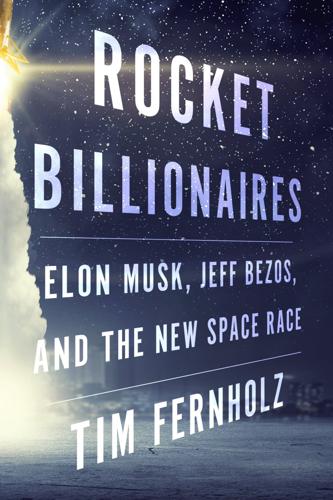
Rocket Billionaires: Elon Musk, Jeff Bezos, and the New Space Race
by
Tim Fernholz
Published 20 Mar 2018
Smith, Blue’s CEO, told me that one of the most impressive practices he found at the company was the “idea of being hardware rich going into test,” that is, having lots of components on hand so that engineers could replicate the “fast, iterative approach” used by software companies, but in mechanical systems. The next move was opening a large headquarters in Kent, Washington, just down the street from an enormous Amazon fulfillment center. Blue’s facility combined rocket science and manufacturing facilities with a museum for Bezos’s space collectibles. These included a real cosmonaut space suit, Star Trek memorabilia (Bezos would make a cameo as an alien in the 2016 film Star Trek Beyond), even a mock-up of a Jules Verne–esque spaceship that stretches between two floors and doubles as a conference room.
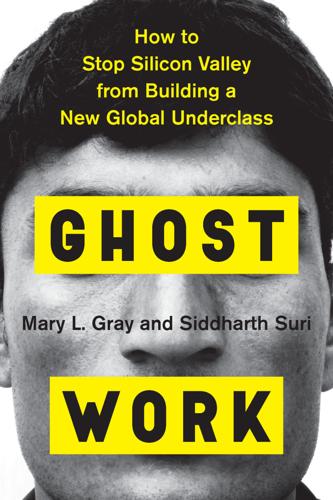
Ghost Work: How to Stop Silicon Valley From Building a New Global Underclass
by
Mary L. Gray
and
Siddharth Suri
Published 6 May 2019
Clicking “dog” or “cat” to label an image that will eventually enable an iPhone to recognize a family pet is not that different from turning a screw on what will eventually become a Ford truck. But that’s where the job similarities end. Blue-collar manufacturing jobs have been the most visible targets of AI’s advance. The Foxconn factories that make iPhones allegedly replaced 60,000 humans with robots in 2016. Amazon’s 20 fulfillment centers reportedly deployed 45,000 robots to work alongside 230,000 people that same year. Yet these numbers confound how many jobs are created by automation. And the media coverage of AI’s impact on full-time blue-collar work can distract us from the rapid growth of a new category of human workers to complement or tend to automated manufacturing systems when AI hits its limits.

The 4-Hour Workweek: Escape 9-5, Live Anywhere, and Join the New Rich
by
Timothy Ferriss
Published 1 Jan 2007
Set up an account with the credit card processor first, for which you will need your own merchant account. This is critical, as the fulfillment house can only handle refunds and declined cards for transactions they process themselves through an outsourced credit card processor. Optionally, set up an account with one of the call centers your new fulfillment center recommends. These will often have toll-free numbers you can use instead of purchasing your own. Look at the percentage split of online to phone orders during testing and consider carefully if the extra revenue from the latter is worth the hassle. It often isn’t. Those who call to order will generally order online if given no other option.

Deaths of Despair and the Future of Capitalism
by
Anne Case
and
Angus Deaton
Published 17 Mar 2020
This enables high-tech firms—think Google, for example—to employ only people with bachelor’s or more advanced degrees, while the support staff around them are outsourced from another firm. According to Bloodworth’s account from Britain, as well as an almost identical account from the US,24 few of the workers in Amazon warehouses (“fulfillment centers”) actually work for Amazon. In the American case, the only visible difference between the few employees of Amazon and the many “temps” who work for Integrity Staffing Solutions is the color of their badges, blue versus white. Everything looks the same, similar people are doing similar jobs, but the working conditions of those who are outsourced—sometimes ex-employees—are often worse, with lower wages, fewer benefits, and limited or no possibilities of promotion.
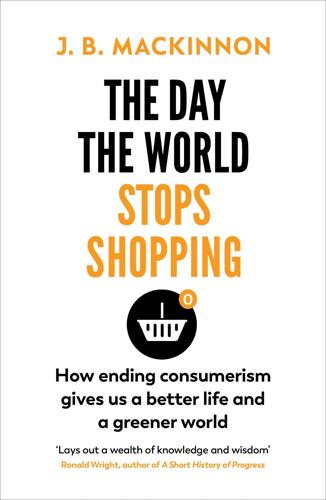
The Day the World Stops Shopping
by
J. B. MacKinnon
Published 14 May 2021
It is stationed in a small industrial park wedged between an artificial lagoon and the Bayshore Freeway in the outer orbit of San Francisco. Actual vultures sometimes circled overhead. Andy Ruben, Trove’s founder, seemed to know every employee on the warehouse floor by name—though in American bizspeak, we weren’t in a warehouse. We were in a Fulfillment Center. For ten years, Ruben was a wunderkind executive at Walmart—in his own words, the “belly of the beast” of consumer culture. As a trailbreaker in sustainability in the world’s largest retailer, he saw how difficult it was to change the way we consume. He promoted energy-efficient lightbulbs, only to watch the number of bulbs in the typical American home nearly double from thirty-five to more than sixty.

Making It in America: The Almost Impossible Quest to Manufacture in the U.S.A. (And How It Got That Way)
by
Rachel Slade
Published 9 Jan 2024
Companies like American Roots can’t compete with the $18-per-hour wage (plus signing bonuses) Amazon offers drivers and warehouse workers, though American Roots can offer more job security and flexibility. And once they’re hired by Amazon, workers don’t last long. A 2021 New York Times investigation revealed that the annual turnover rate at fulfillment centers averaged 150 percent. In other words, Amazon replaces its entire workforce about every eight months. Bezos once said that an entrenched workforce created a “march to mediocrity,” claims David Niekerk, a former long-serving vice president for the company. Certainly churn prevents workers from organizing each other into a union and demanding better working conditions.

Limitarianism: The Case Against Extreme Wealth
by
Ingrid Robeyns
Published 16 Jan 2024
Amazon workers are not called workers but “associates,” just as Jeff Bezos is an “associate”—albeit one who earns rather more than the associates who are picking up the orders and driving packages around the country, with no time for sanitary breaks. Amazon has more nice words to redescribe reality—“fulfillment center” is the term used for “warehouse,” and “being released” for “being sacked” (although in the latter case the connotations are weird, since prisons also “release” their former inmates). But nice words do not change material facts.26 Given its immense resources, Amazon could easily have improved working conditions and decreased health and safety risks, such as by affording workers more breaks and giving them salaries that would allow for a decent living on full-time pay.

Palo Alto: A History of California, Capitalism, and the World
by
Malcolm Harris
Published 14 Feb 2023
iv In 2004, when young NorCal screenwriter Alex Tse needed a way to bring three of San Francisco’s segregated ethnic communities together, he wrote a conflict between a local black rapper and CD bootleggers in Chinatown. Showtime didn’t pick up the series, but the movie-length pilot directed by Spike Lee, Sucker Free City, is an account of the era that’s too often overlooked. v In March of 2022, workers at an Amazon fulfillment center on Staten Island achieved a shocking upset when the rank-and-file Amazon Labor Union won a resounding victory. Whether the Bezos team will be able to decertify the organization before they negotiate the firm’s first union contract remains, at the time of this writing, unclear. Chapter 5.2 You Better Try to Make Me Rich Onshoring to Foxconn—The Fatal Consequences—Gangsterism as Governance—Heroin and IKEA in East Palo Alto—SCORE!
…
Hannah Knowles, “Amazon Admits It Was Wrong to Suggest Its Workforce Never Needs to Pee in Bottles on the Job,” Washington Post, April 3, 2021. 39. Safiyo Mohamed, “I Got My First Job in the U.S. Sorting Packages for Amazon—and It Was Awful,” Sahan Journal, January 25, 2021, http://sahanjournal.com/community-voices/commentary-amazon-fulfillment-center-somali-workers. 40. Will Evans, “How Amazon Hid Its Safety Crisis,” Reveal, September 29, 2020, http://revealnews.org/article/how-amazon-hid-its-safety-crisis. 41. Katherine Anne Long, “Amazon Drivers Injured Far More Often Than the Company’s Warehouse Workers; See the Charts,” Seattle Times, June 1, 2021. 42.

The Future Is Faster Than You Think: How Converging Technologies Are Transforming Business, Industries, and Our Lives
by
Peter H. Diamandis
and
Steven Kotler
Published 28 Jan 2020
Walmart uses shelf-stocking robots for inventory control, Best Buy uses a robo-cashier to allow select locations to operate 24-7, and Lowe’s Home Improvement employs the LoweBot—a giant iPad on wheels—to help customers find the items they need while tracking inventory along the way. The biggest benefit robotics provides might be in warehouse logistics. In 2012, when Amazon dished out $775 million for Kiva Systems, few could predict that just six years later there would be forty-five thousand Kiva robots deployed at all of their fulfillment centers, helping process a ridiculous 306 items per second during the Christmas season. Many other retailers are following suit. Order jeans from the Gap and soon they’ll be sorted, packed, and shipped with the help of a Kindred robot. Remember the old arcade game where you picked up teddy bears with a giant claw?

System Error: Where Big Tech Went Wrong and How We Can Reboot
by
Rob Reich
,
Mehran Sahami
and
Jeremy M. Weinstein
Published 6 Sep 2021
A model is considered valid if its predictions map reasonably well onto the outcomes we actually observe in the world. The challenge is that what is predictively accurate in one context has no guarantee of traveling well to other contexts. If one is trying to develop a model to predict the likelihood of success for a potential hire at an Amazon fulfillment center, it may not make sense to use a model trained on data from workers at Amazon headquarters. If one is trying to develop a model to predict the likelihood of a defendant committing a crime while out on bail in the United States in 2019, it may not make sense to use a model constructed on data from Sweden or even from a different subset of Americans, such as individuals over the age of forty-five living in states that border Canada.

Exponential: How Accelerating Technology Is Leaving Us Behind and What to Do About It
by
Azeem Azhar
Published 6 Sep 2021
utm_source=website&utm_medium=social> [accessed 3 April 2021]. 73 Michael Sainato, ‘“I’m Not a Robot”: Amazon Workers Condemn Unsafe, Grueling Conditions at Warehouse’, The Guardian, 5 February 2020 <http://www.theguardian.com/technology/2020/feb/05/amazon-workers-protest-unsafe-grueling-conditions-warehouse> [accessed 6 October 2020]. 74 Colin Lecher, ‘How Amazon Automatically Tracks and Fires Warehouse Workers for “Productivity”’, The Verge, 25 April 2019 <https://www.theverge.com/2019/4/25/18516004/amazon-warehouse-fulfillment-centers-productivity-firing-terminations> [accessed 6 October 2020]. 75 James Manyika et al., A New Look at the Declining Labor Share of Income in the United States (McKinsey Global Institute, May 2019), p. 64. 76 ‘The Productivity–Pay Gap’, Economic Policy Institute, July 2019 <https://www.epi.org/productivity-pay-gap/> [accessed 22 April 2021]. 77 Manayika et al., A New Look at the Declining Labor Share of Income in the United States, p. 64. 78 Autor et al., The Fall of the Labor Share and the Rise of Superstar Firms, p. 106. 79 Rani Molla, ‘Facebook, Google and Netflix Pay a Higher Median Salary than Exxon, Goldman Sachs or Verizon’, Vox, 30 April 2018 <https://www.vox.com/2018/4/30/17301264/how-much-twitter-google-amazon-highest-paying-salary-tech> [accessed 18 October 2020]. 80 ‘Zymergen: Case Study’, The Partnership on AI <https://www.partnershiponai.org/case-study/zymergen/> [accessed 18 October 2020]. 81 Frey, The Technology Trap, pp. 137–139. 82 Robert C.
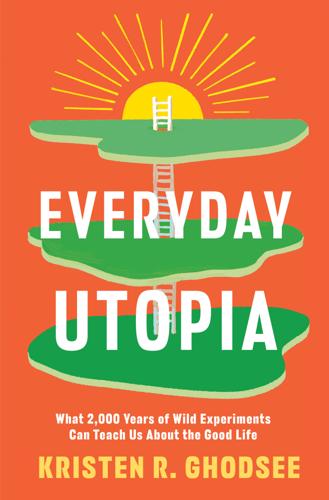
Everyday Utopia: What 2,000 Years of Wild Experiments Can Teach Us About the Good Life
by
Kristen R. Ghodsee
Published 16 May 2023
I couldn’t understand why he didn’t just ask to borrow ours,” explained the woman who lived with her family at Two Echo for two years. “It just makes so much more sense for everyone to share.” Cohousing arrangements also mitigate the isolation that results from more remote working and the migration of our public spaces from the material to the digital world. As brick and mortar stores give way to Amazon fulfillment centers, we have fewer reasons to leave our homes to interact with others. With new technology, you almost never have to wait in a line anymore, and while I realize that in most cases this is a good thing, some of my fondest memories are of the shared excitement and effusive conversations I had with other fans while queuing for hours to get tickets for live concerts or midnight premieres of highly anticipated films.
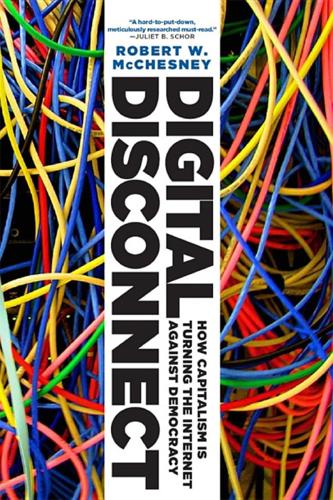
Digital Disconnect: How Capitalism Is Turning the Internet Against Democracy
by
Robert W. McChesney
Published 5 Mar 2013
In 2008 Google had nineteen such data centers in the United States and almost as many elsewhere.39 Google was thought to be purchasing 15 percent of the servers being sold in the United States at the time.40 In combination, these factors demonstrate how absurd are the claims by giants like Microsoft and Google that “competition is a click away” and that they are in mortal fear for their very survival if someone were to develop a better algorithm in her garage.41 Amazon, too, is more than an algorithm and a stack of patents. It has sixty-nine data and fulfillment centers in the United States, seventeen of which were built since 2011, with plans for more to come. It has a nonunion workforce; the working conditions in one of its main fulfillment warehouses in Allentown, Pennsylvania, were characterized by an investigative report as resembling “the onerous conditions so indelibly satirized by Charlie Chaplin in Modern Times.”42 Today, the Internet as a social medium and information system is the domain of a handful of colossal firms.

Radical Technologies: The Design of Everyday Life
by
Adam Greenfield
Published 29 May 2017
In fact everything in this proposition seems contingent on something else, everything cascades and invokes some set of settled conventions still further down the line: at minimum the Dash Button assumes that you have a wireless base station at home, and a phone that can run the Amazon app, and most obviously that you have an Amazon account and a line of credit to feed it. Other facts about the world unavoidably get wound in, too. The temperature in Amazon’s fulfillment center, passing-out hot in the summer months because leaving the doors open to let in a breeze would also admit some possibility of theft. The prevalence of miscarriages and cancers among workers in the plant where the gallium arsenide in the LED was made. The composition of leachate in springs fed by runoff from the landfill where the Dash Button will inevitably come to rest in just a few years’ time.

Work Won't Love You Back: How Devotion to Our Jobs Keeps Us Exploited, Exhausted, and Alone
by
Sarah Jaffe
Published 26 Jan 2021
Yet in some ways the jobs are similar to those in the retail stores: the handheld scanner, the shelves of goods, the pressure to go faster. But instead of the emotional labor of smiling at customers, the “pickers” in the warehouse face the grinding boredom of long hours alone, without even music to keep them company. Emily Guendelsberger, a journalist who took an Amazon “fulfillment center” job and wrote about it in her book On the Clock , encountered a coworker one night dressed as Santa Claus for a pre-Christmas shift. He was, she wrote, a professional—well, a volunteer—Santa in his time outside of the warehouse, but Santa-ing didn’t pay the bills. Santa encouraged her to feel “blessed” to be “healthy enough to work here.”

Dopesick: Dealers, Doctors and the Drug Company That Addicted America
by
Beth Macy
Published 4 Mar 2019
in nearby Winchester he could now buy it: Compared with thirty dollars for a bag, or point, of heroin in Woodstock: Author interview, Lutz, Oct. 26, 2017. when rural America becomes the new inner city: Janet Adamy and Paul Overberg, “Rural America Is the New ‘Inner City,’” Wall Street Journal, May 27 and 28, 2017. Economic activity is more concentrated now in cities, and even many companies (for example, Amazon fulfillment centers) that were initially drawn to rural areas for lower taxes have picked up and moved to metro areas. The rural/urban divide has widened further following the 2007–2009 recession, with wages one-third higher in cities than rural areas, an inequality gap that is 50 percent wider than it was in the 1970s.

The Awoken: A Novel
by
Katelyn Monroe Howes
Published 8 Aug 2022
I turned the corner, then immediately stopped dead in my tracks. My jaw dropped. I’ll never forget the sight. A huge glass door lay in front of me. Through it was what looked like a warehouse. There was a uterine-pink hue to the room. Hovering on the ground was a thick fog indicating the room’s subzero temperature. It was like a shipping fulfillment center, but this contained only one thing: human bodies. Thousands of bodies, more than I could count, were hanging in bags. All still frozen. Humans hoping for a second chance at life on display like fish at the grocery store. The scope of cryogenics was far greater than I ever imagined. When I decided to do it, people thought I was crazy.

More Everything Forever: AI Overlords, Space Empires, and Silicon Valley's Crusade to Control the Fate of Humanity
by
Adam Becker
Published 14 Jun 2025
And I’m using my lottery winnings to push us a little further into space,” Jeff Bezos said in 2017. “We need to build reusable rockets, and that is what Blue Origin is dedicated to… taking my Amazon lottery winnings and dedicating [them] to [that].… It’s a passion, but it’s also important.”52 Don’t look at the horrifying labor conditions at the local Amazon fulfillment center. Look at the shiny rocket instead. Ignore the problems of this world. Everything will be better in space. * * * There is an entire ideology at work here, sprawling and ill-defined. It’s fueled by a collection of related desires and shared by a set of influential individuals and communities in the tech industry and the San Francisco Bay Area.
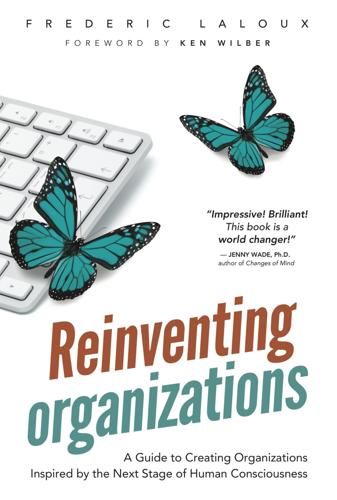
Reinventing Organizations: A Guide to Creating Organizations Inspired by the Next Stage of Human Consciousness
by
Frederic Laloux
and
Ken Wilber
Published 9 Feb 2014
Zappos.com, an online shoe retailer, offers its new hires a $3,000 check if they have second thoughts and choose to quit during the four-week orientation. The idea is that everyone will be better off not staying in a marriage that isn’t meant to be. Three thousand dollars is a lot of money for people working in call centers or moving boxes in fulfillment centers, which is what most Zappos employees do. It’s a tribute to Zappos’ outstanding culture that the percentage of people taking the money and leaving is only around one or two percent. Whenever the percentage of people taking the check draws too close to zero, Zappos increases the amount (it started with $100, then raised it to $200, and raised it again and again up to its current level).
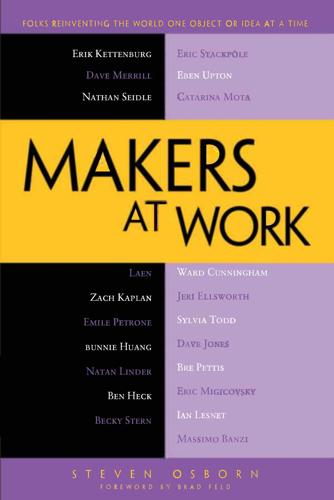
Makers at Work: Folks Reinventing the World One Object or Idea at a Time
by
Steven Osborn
Published 17 Sep 2013
We consistently grew—we were growing linearly every year, getting more customers, getting more subscribers, because with the subscription business, some percent renew every year, and then you keep adding more people. Then a bunch of things happened all at the same time. Kickstarter launched, transaction volume on Etsy broke $100M l sellers using Fulfillment by Amazon stowed more than one million unique items in their fulfillment centers. Then we started getting inquiries from start-ups and actual people who were doing their Kickstarters and needed the materials. At the time, we didn’t sell the materials. We just connected you directly with the vendor if you were one of our subscribers. What we saw happening was the interest, energy and excitement for all this stuff was coming from start-ups and small companies that didn’t have $120,000 to spend.

Algorithms to Live By: The Computer Science of Human Decisions
by
Brian Christian
and
Tom Griffiths
Published 4 Apr 2016
But it’s not actually necessary to have memory made of different materials for caching to make sense. Caching is just as useful when it’s proximity, rather than performance, that’s the scarce resource. This fundamental insight—that in-demand files should be stored near the location where they are used—also translates into purely physical environments. For example, Amazon’s enormous fulfillment centers generally eschew any type of human-comprehensible organization, of the kind you’d find in a library or a department store. Instead, employees are told to place incoming items wherever they can find space in the warehouse—batteries cheek by jowl with pencil sharpeners, diapers, barbecue grills, and learn-the-dobro DVDs—and tag the location of each item in a central database using bar codes.
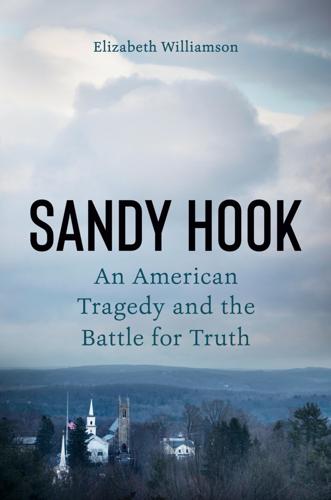
Sandy Hook: An American Tragedy and the Battle for Truth
by
Elizabeth Williamson
Published 8 Mar 2022
The office park looked like most others: rows of glass storefronts hunkered behind parched, half-hearted landscaping. Warehouses and loading docks squatted across a concrete expanse out back. Jones’s fellow tenants included Orkin pest control, Prometheus Security, and what looked like a mail-order fulfillment center for Kinky Friedman Cigars. Jones’s sidekick, Rob Dew, wearing a Ron Paul T-shirt and Che Guevara–type beret, let me in. Jones greeted me inside Infowars’ messy reception area, a dim space hung with maps and a homely framed needlepoint that read liberty or death. Jones still wore his going-to-court clothes: dark jacket, too-snug, monogrammed white shirt, and soft-soled dress shoes.

WTF?: What's the Future and Why It's Up to Us
by
Tim O'Reilly
Published 9 Oct 2017
Similarly, robots seem to have accelerated Amazon’s human hiring. From 2014 through 2016, the company went from having 1,400 robots in its warehouses to 45,000. During the same time frame, it added nearly 200,000 full-time employees. It added 110,000 employees in 2016 alone, most of them in its highly automated fulfillment centers. I have been told that, including temps and subcontractors, 480,000 people work in Amazon distribution and delivery services, with 250,000 more added at peak holiday times. They can’t hire fast enough. Robots allow Amazon to pack more products into the same warehouse footprint, and make human workers more productive.

Aerotropolis
by
John D. Kasarda
and
Greg Lindsay
Published 2 Jan 2009
Zappos moved to Louisville in 2002, graduating from UPS Supply Chain Solutions to a series of ever-larger warehouses. The current one has a footprint of 835,000 square feet, one of the biggest in the state. Once it’s full, Adkins said on our tour, “we’ll build another building.” Amazon’s tail may be longer than Zappos’, but Zappos is pure tail. Amazon has fulfillment centers in fifteen American cities, including one in Louisville and five in Kentucky. Zappos has one, with four million items on hand and an average of only four of everything in stock. Its owner re-gards its warehouse as a Petri dish and intends to stock some of its best-selling goods there. What happens inside depends on your purchase.
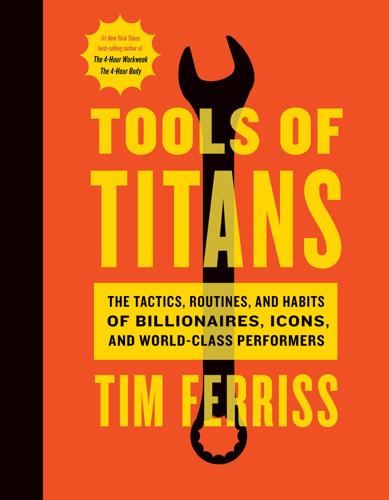
Tools of Titans: The Tactics, Routines, and Habits of Billionaires, Icons, and World-Class Performers
by
Timothy Ferriss
Published 6 Dec 2016
* * * This question allowed me to take my customer service workload from 40 to 60 hours per week to less than 2 hours per week. Until mid-2004, I was the sole decision maker. For instance, if a professional athlete overseas needed our product overnighted with special customs forms, I would get an email or phone call from one of my fulfillment centers: “How should we handle this? What would you like to charge?” These unusual “edge cases” might seem like rare exceptions, but they were a daily occurrence. Dozens per week hit me, on top of everything else. The fix: I sent an email to all of my direct reports along the lines of “From this point forward, please don’t contact for me with questions about A, B, or C.

The Meritocracy Trap: How America's Foundational Myth Feeds Inequality, Dismantles the Middle Class, and Devours the Elite
by
Daniel Markovits
Published 14 Sep 2019
Uber’s algorithms, for example, allow a small cadre of top managers (although Uber is worth over $50 billion, it has only about sixteen thousand employees) directly to coordinate the work of hundreds of thousands of drivers who have literally never met middle management. Walmart executives can know how many cans of tennis balls a branch in suburban Albuquerque has in stock, and how many it has sold in the prior week. Amazon’s management can know how many toy music boxes its Breinigsville, Pennsylvania, fulfillment center has shipped per week for the prior six months. And GE’s bosses can call up the productivity of every assembly line. Moreover, elite executives do not just monitor but can also direct production workers, often reaching into the finest details of their work. Amazon’s warehouse administration—in which top-down policies regulate production workers’ movements down to the individual step—is just an especially vivid example of a general practice.

Wasps: The Splendors and Miseries of an American Aristocracy
by
Michael Knox Beran
Published 2 Aug 2021
More so, perhaps.”I Yet if each of us could, on the morrow, be installed in a modern castle with every circumstance of material opulence, every device of ingenious utility, we would still confront Emerson’s insistence that how “to spend a day nobly, is the problem to be solved, beside which all the great reforms which are preached seem to me trivial.” The WASPs’ search for a higher life while economic grievances persist—while people are cold or hungry or working in those absurdly named forums, the Amazon Fulfillment Centers—may seem so much intellectual caviar, a daydream of the ivory tower. But the point of Henry James’s novel The Princess Casamassima is that “a fresh deal of the social pack” that concentrates relentlessly on material wants at the expense of other kinds of poverty will beget evils no less real than the socioeconomic ones it seeks to remedy.